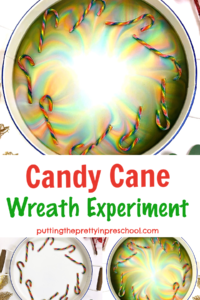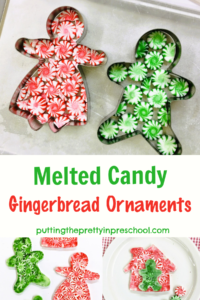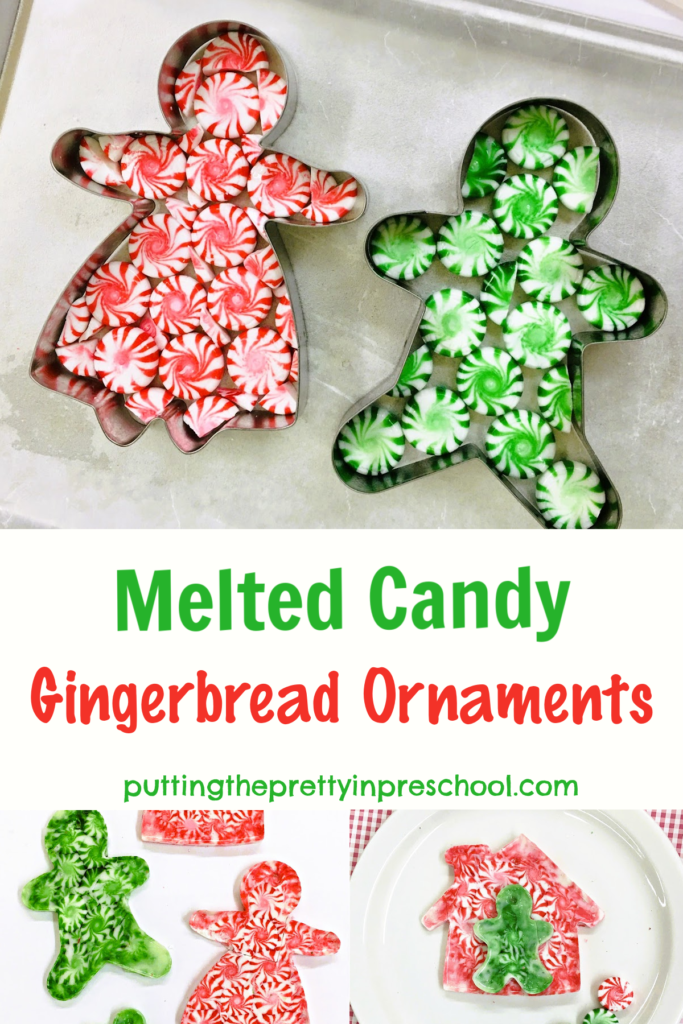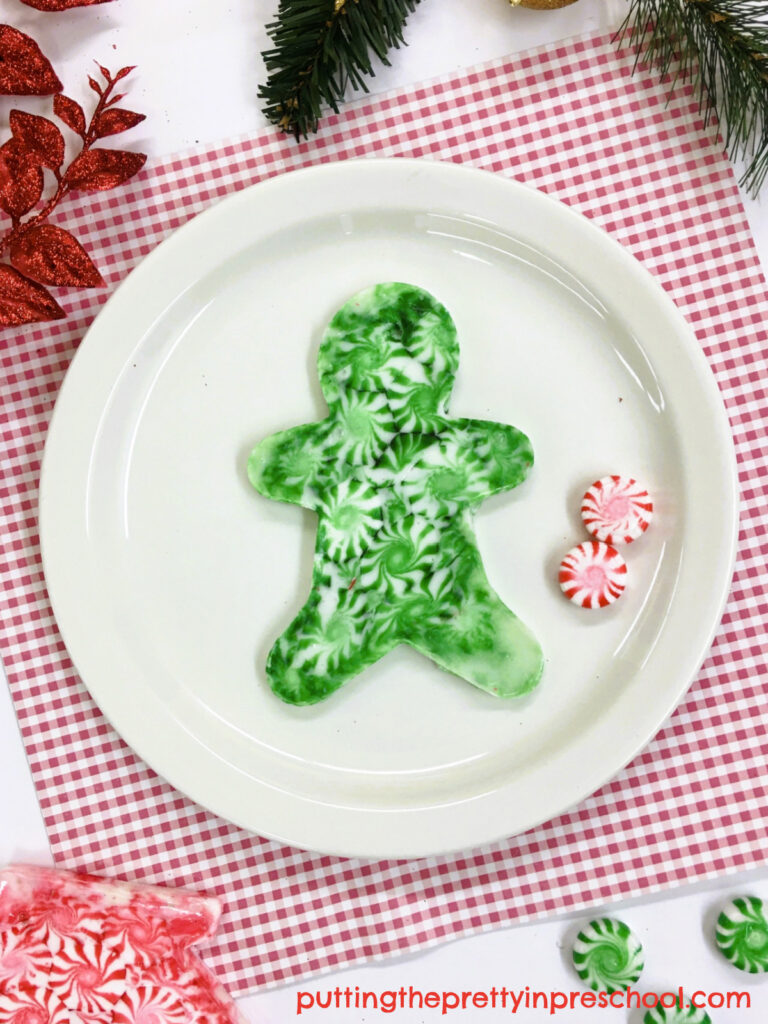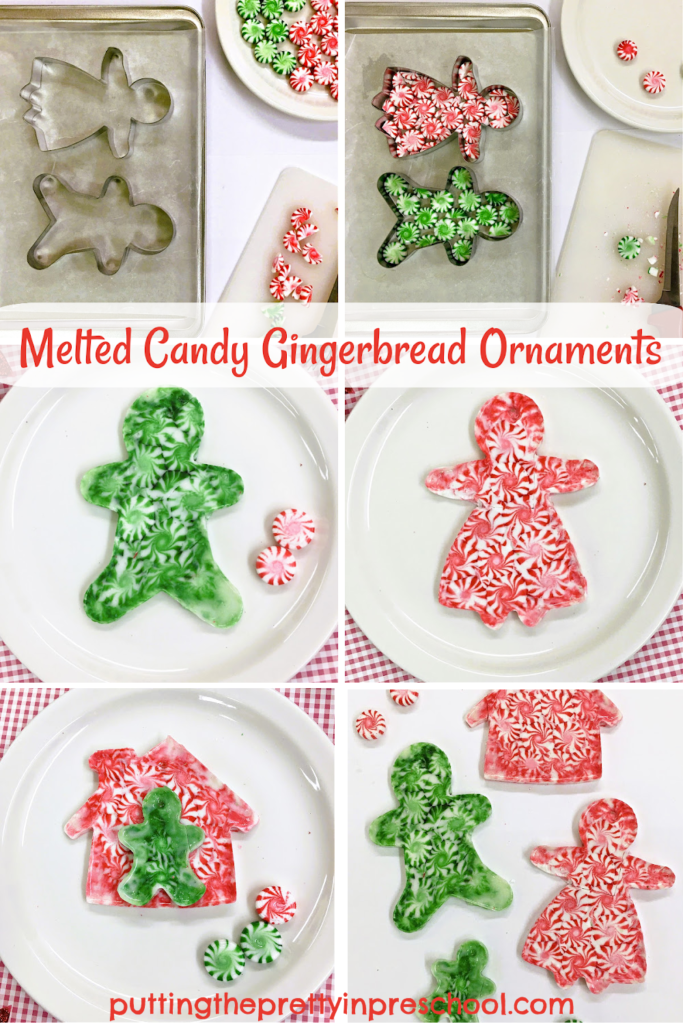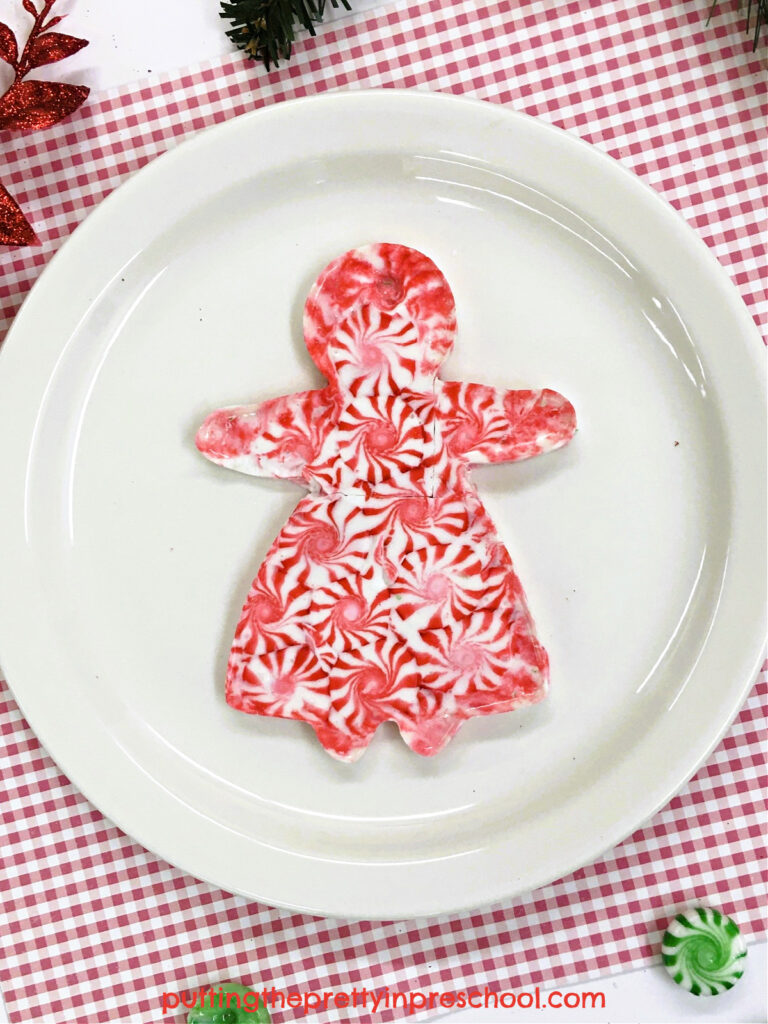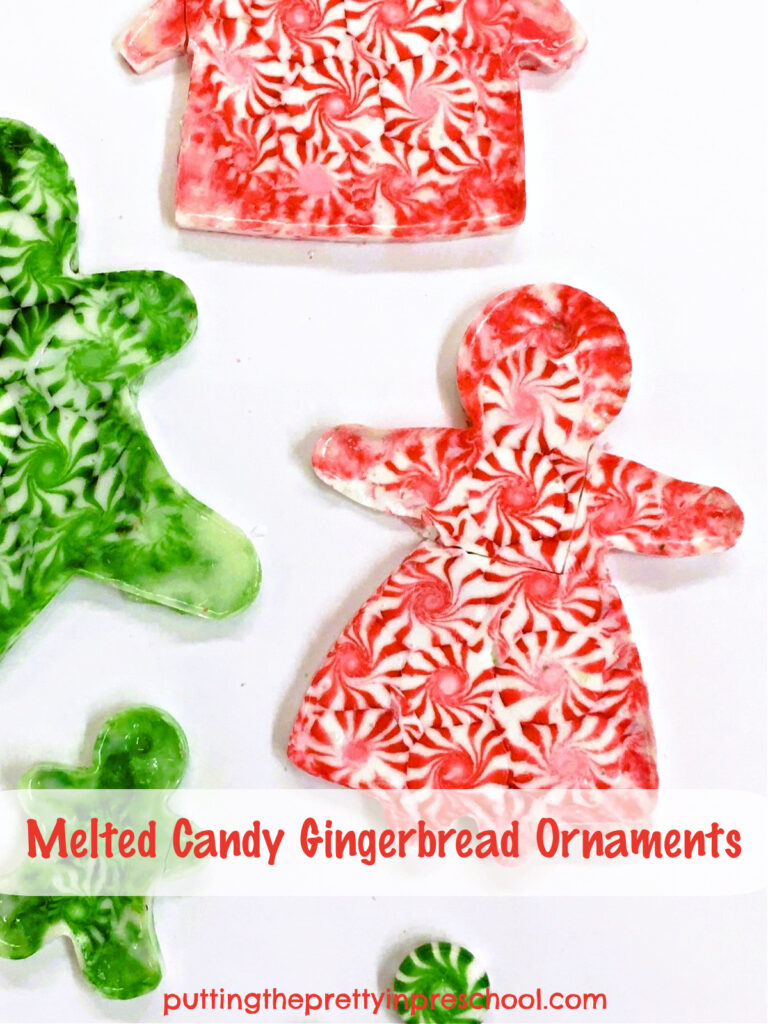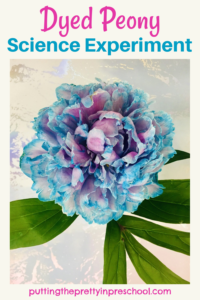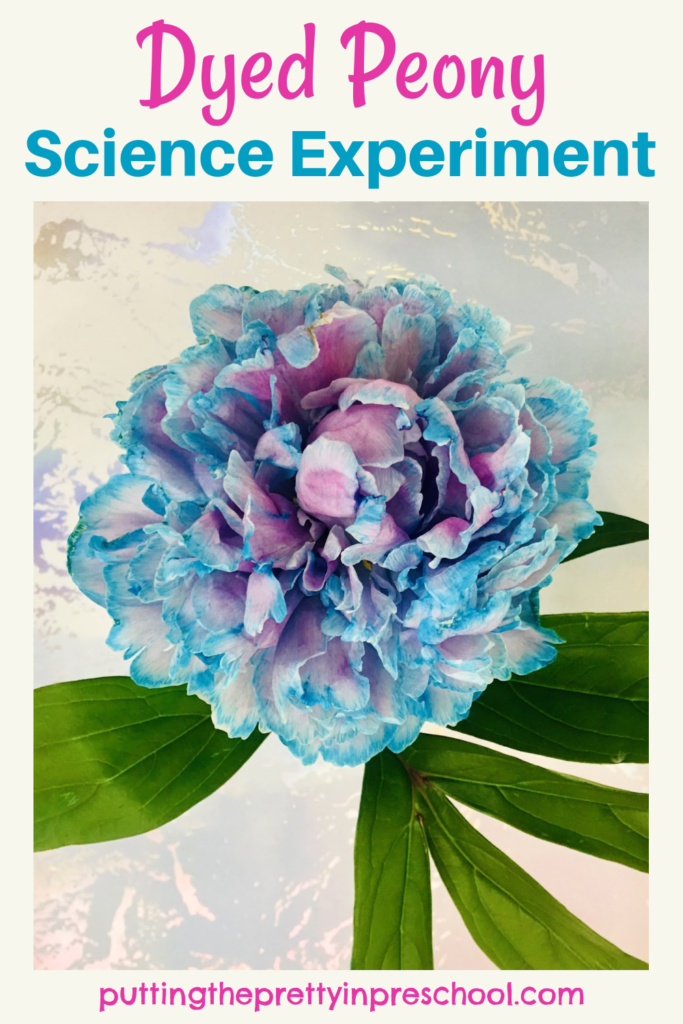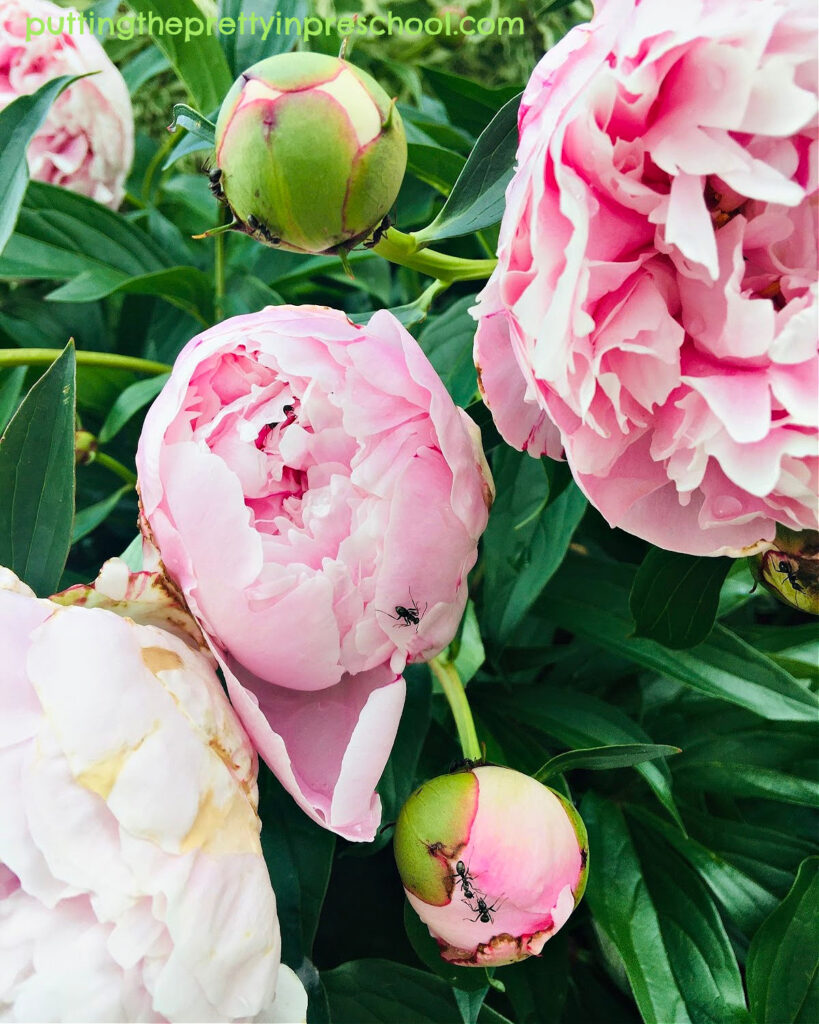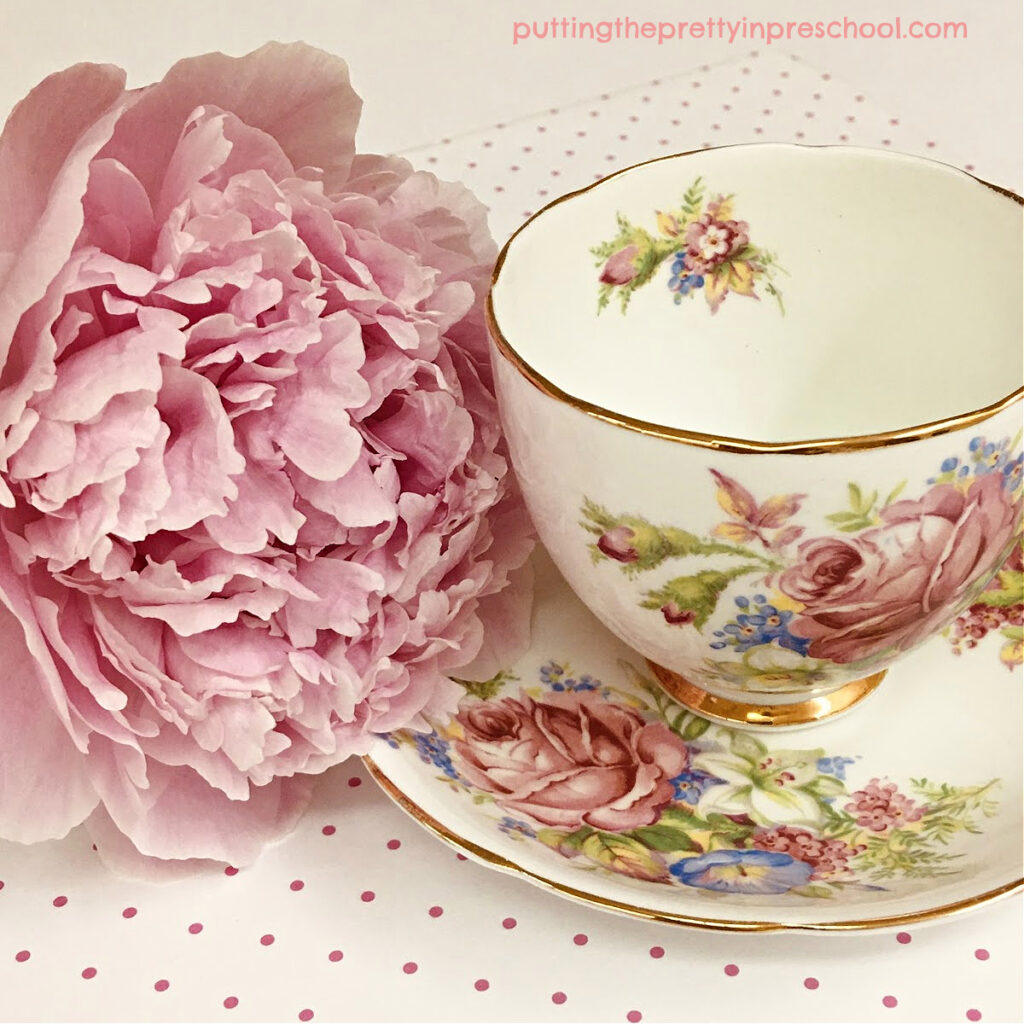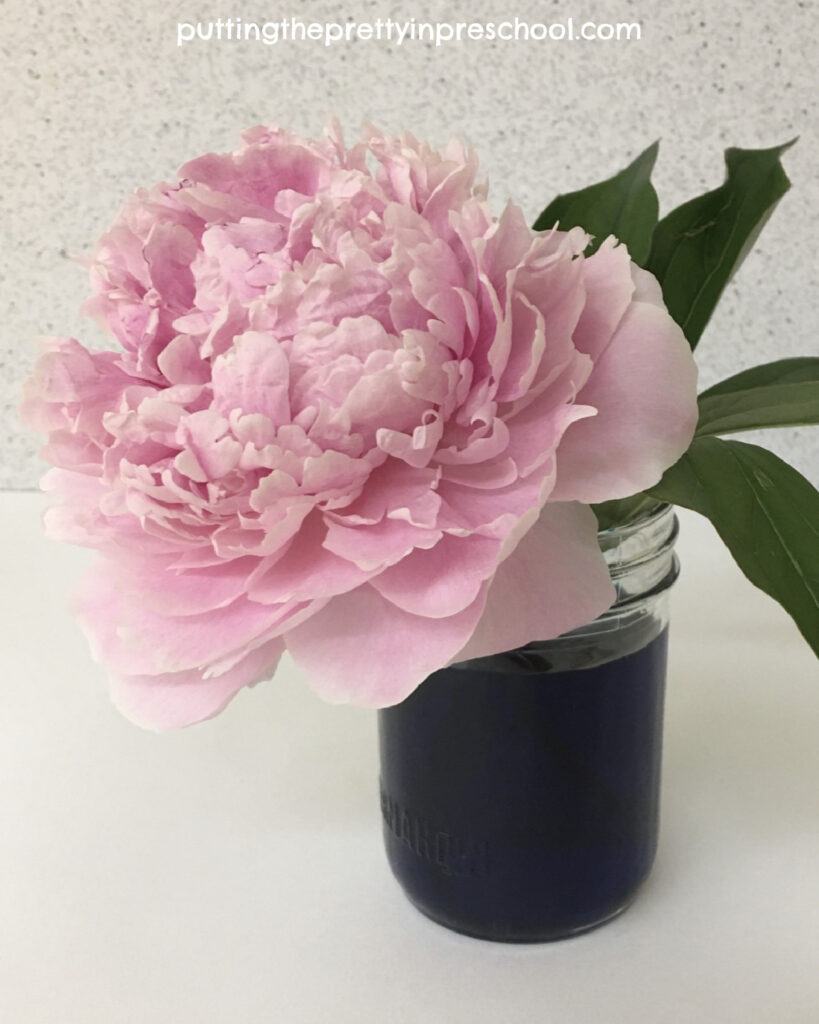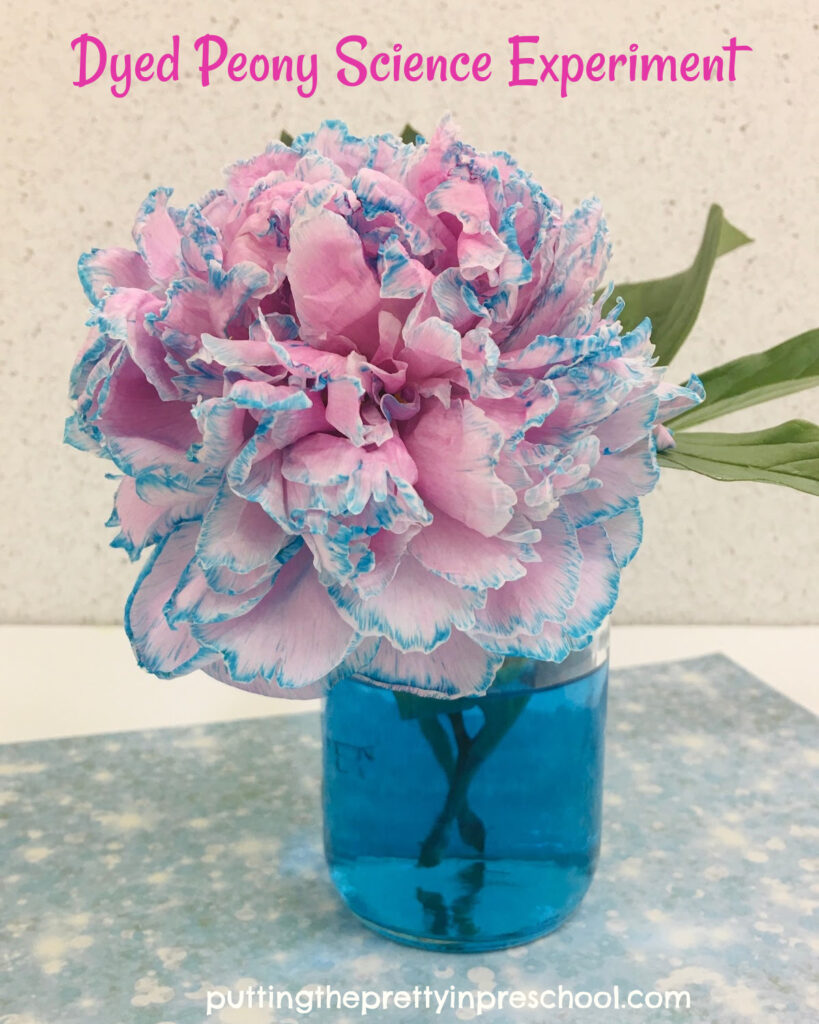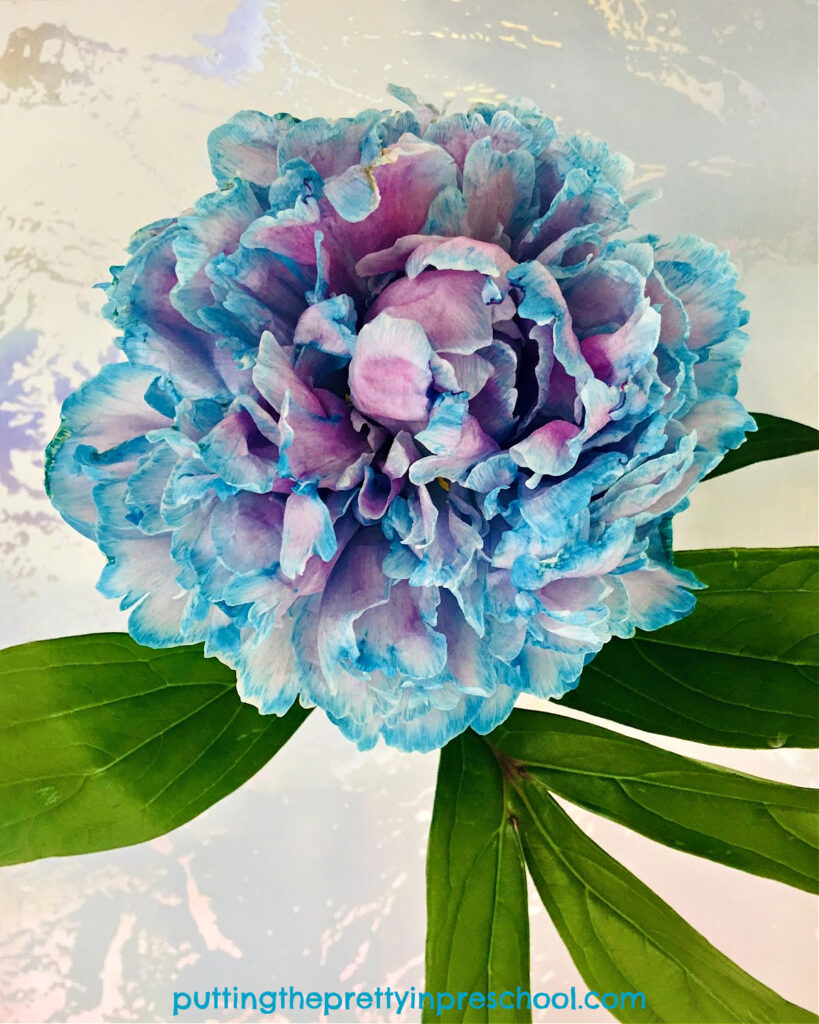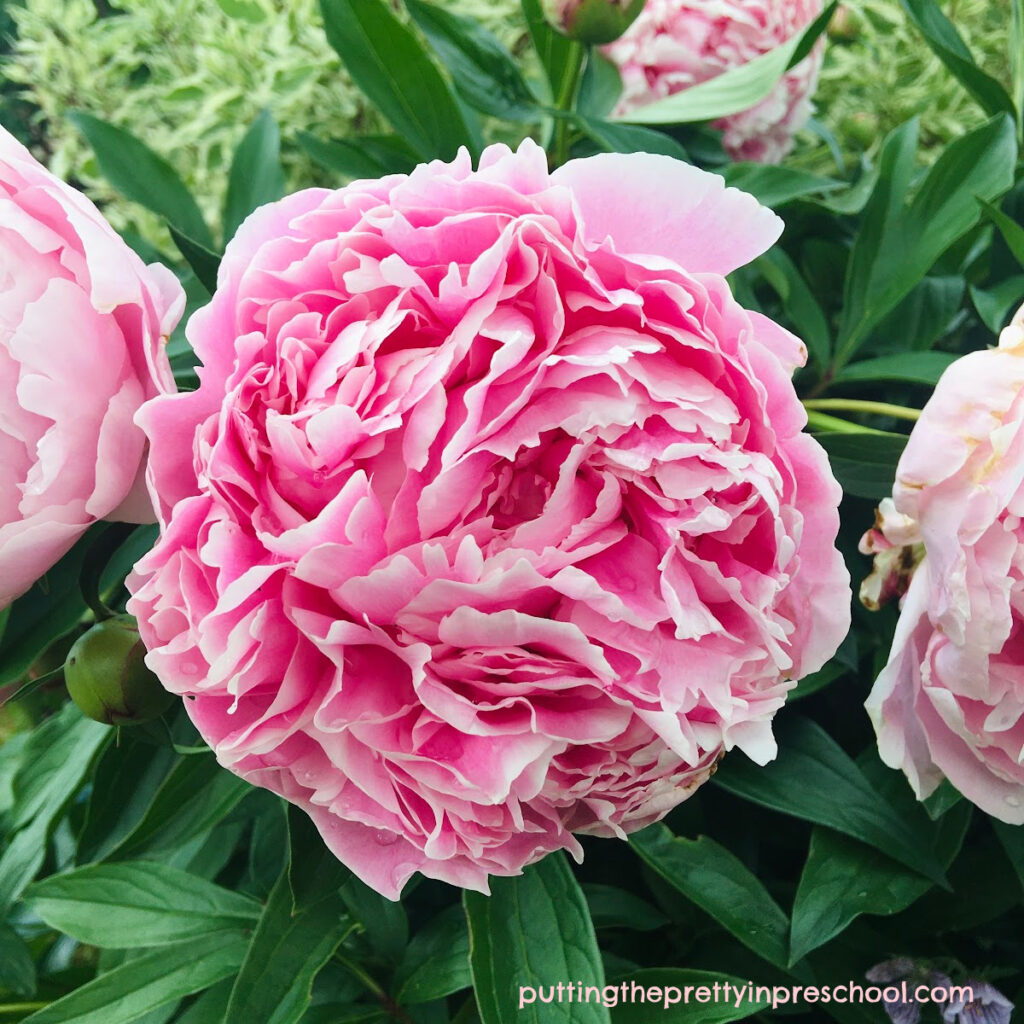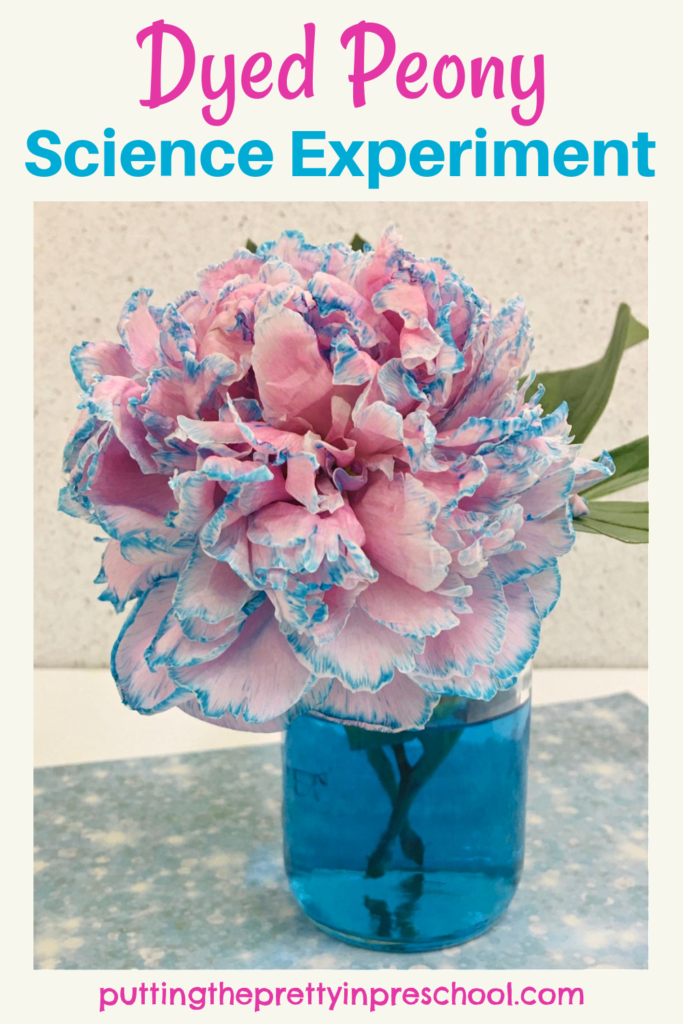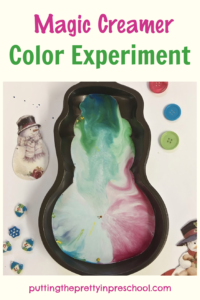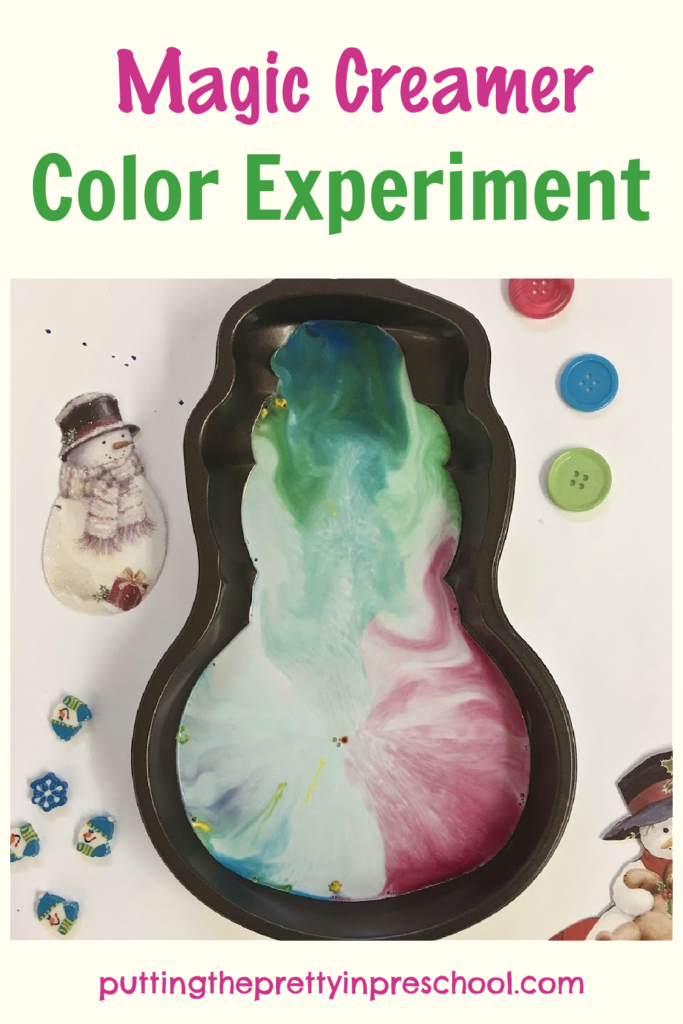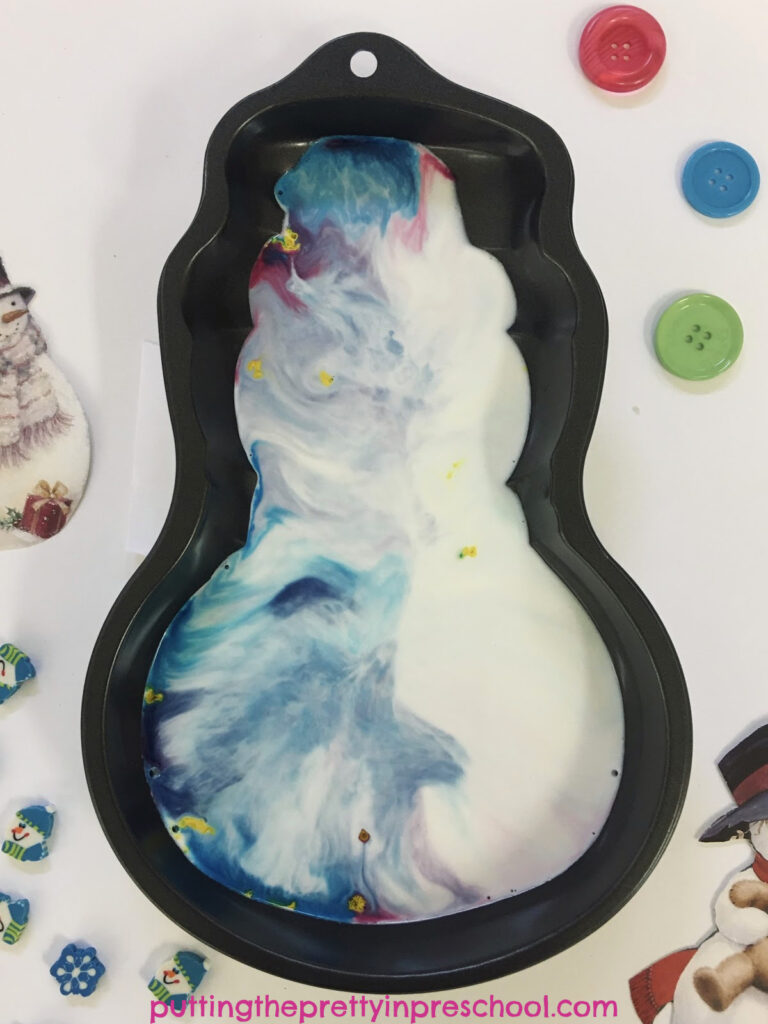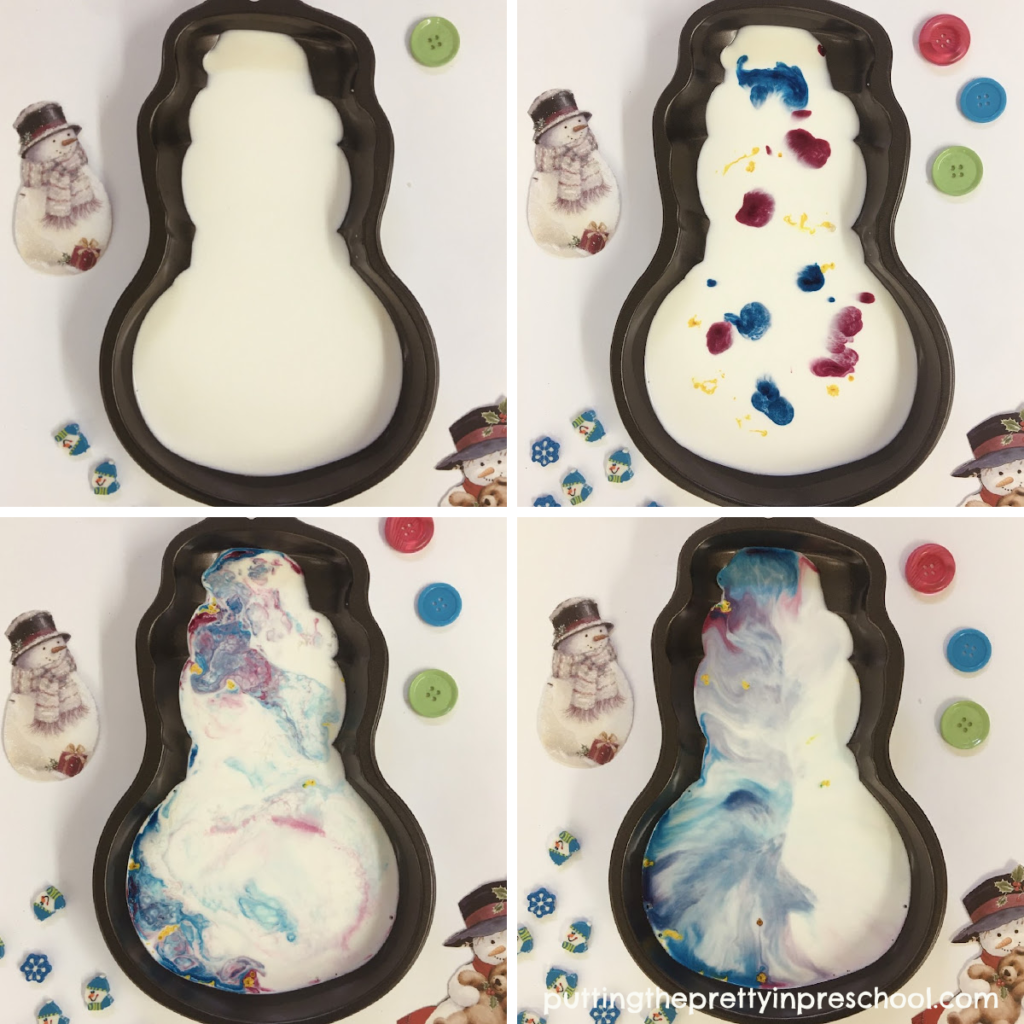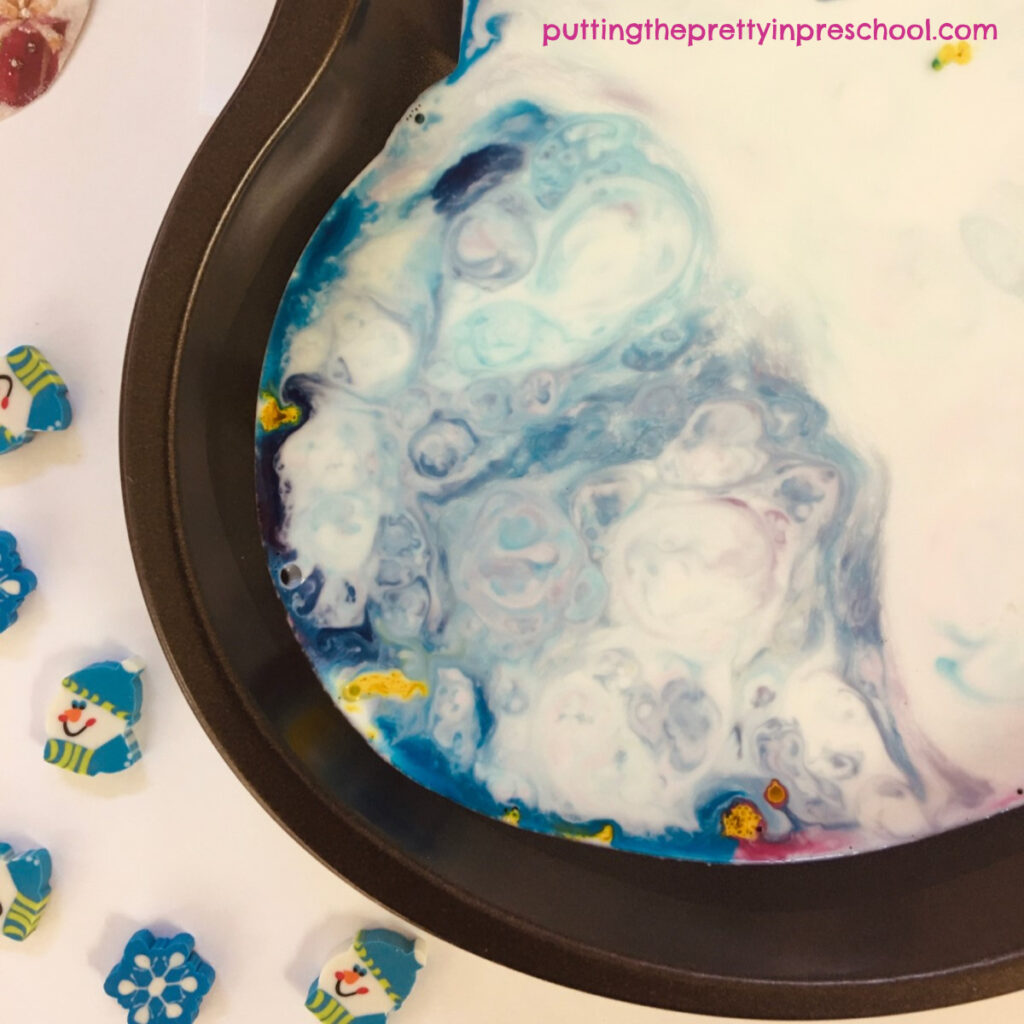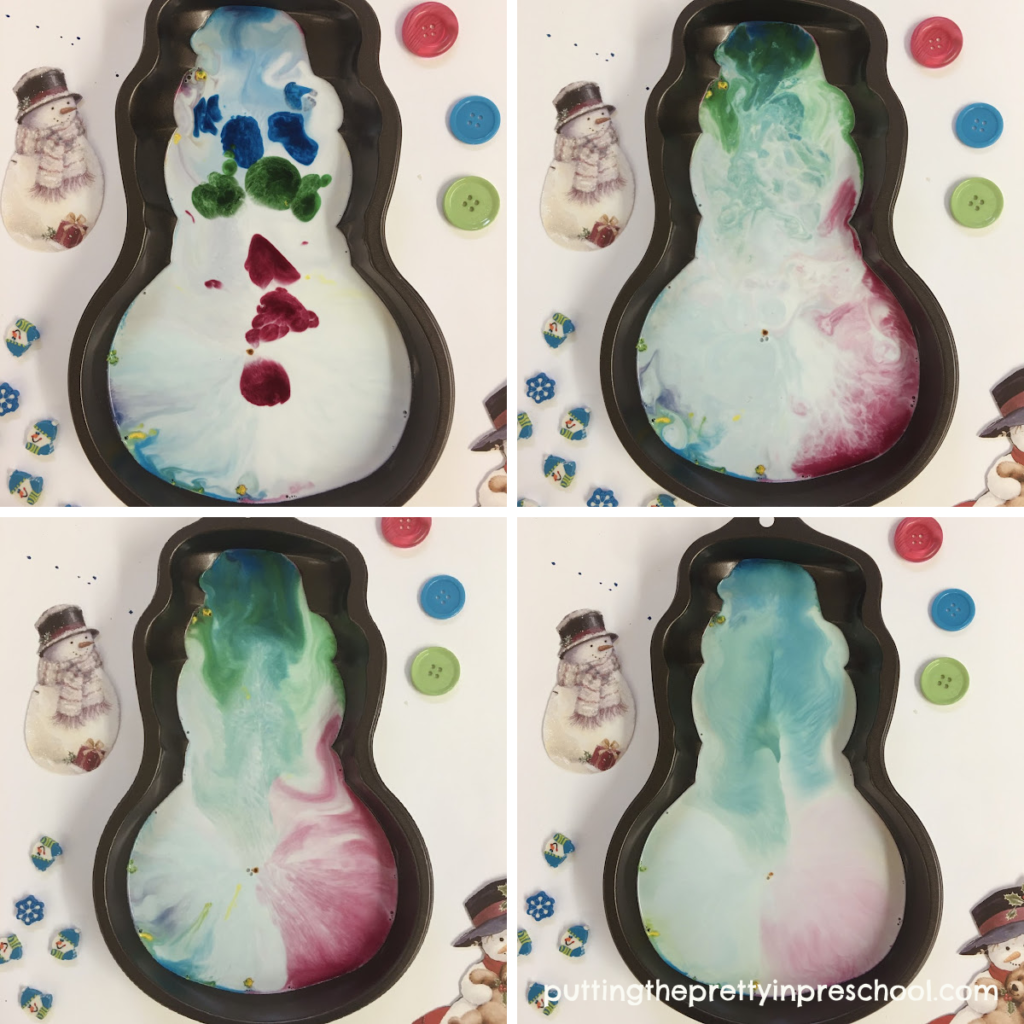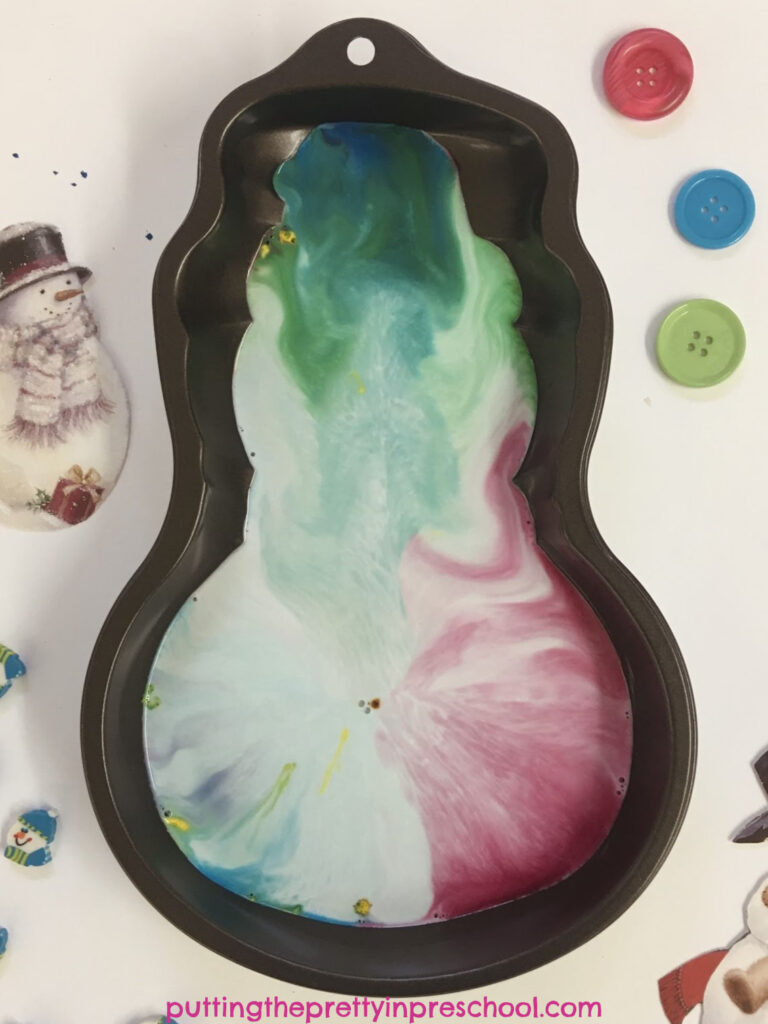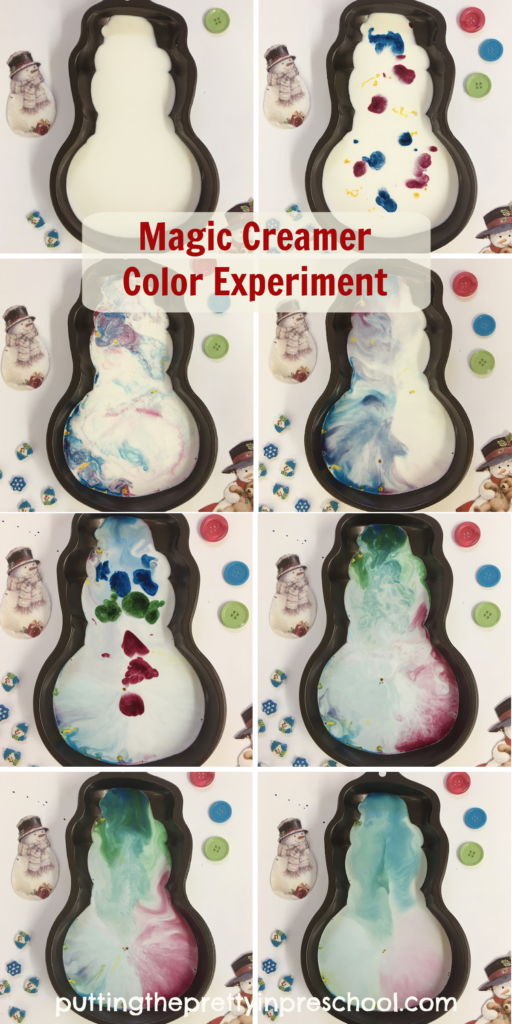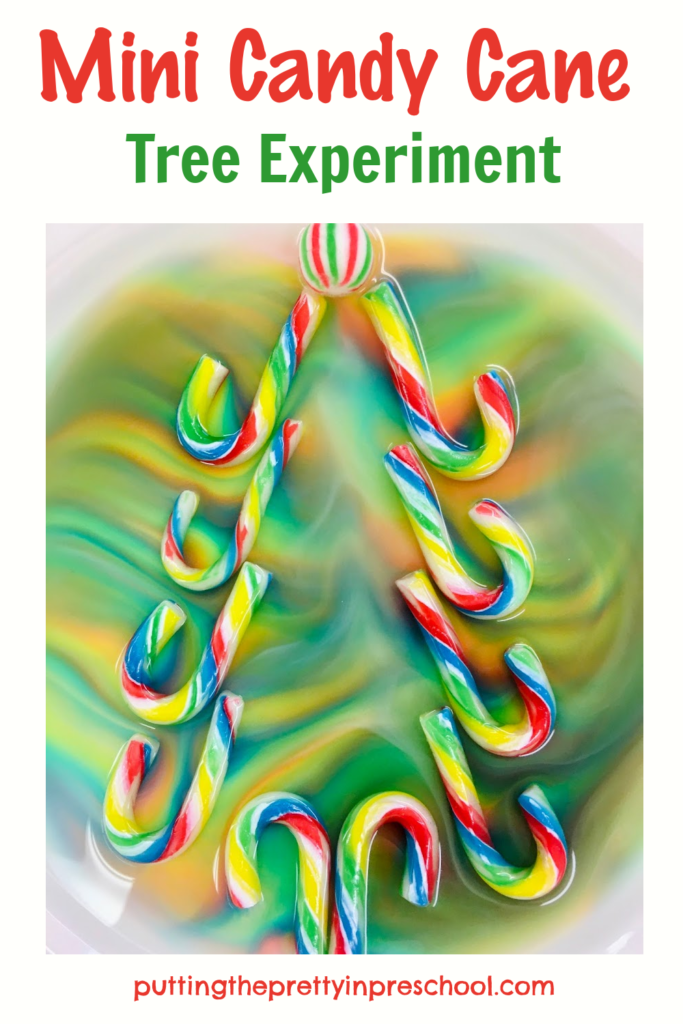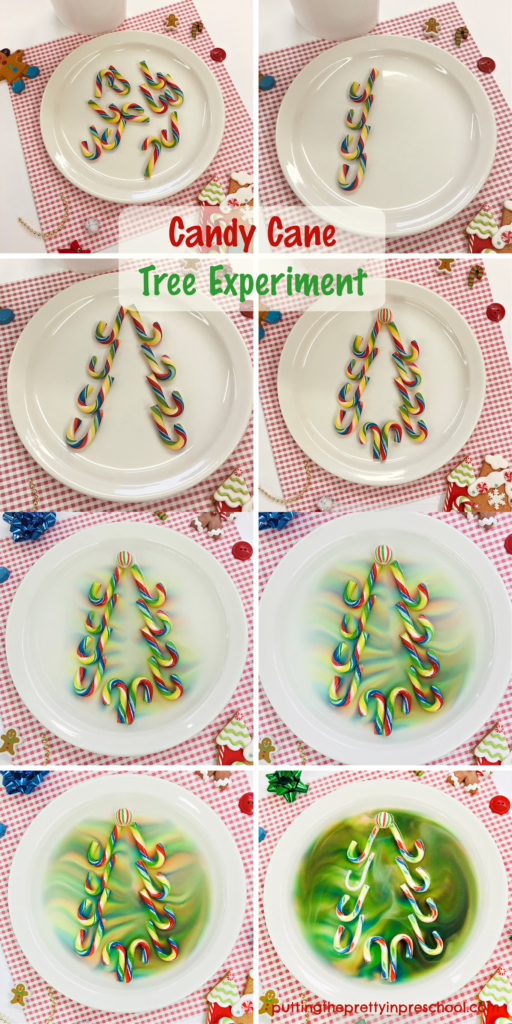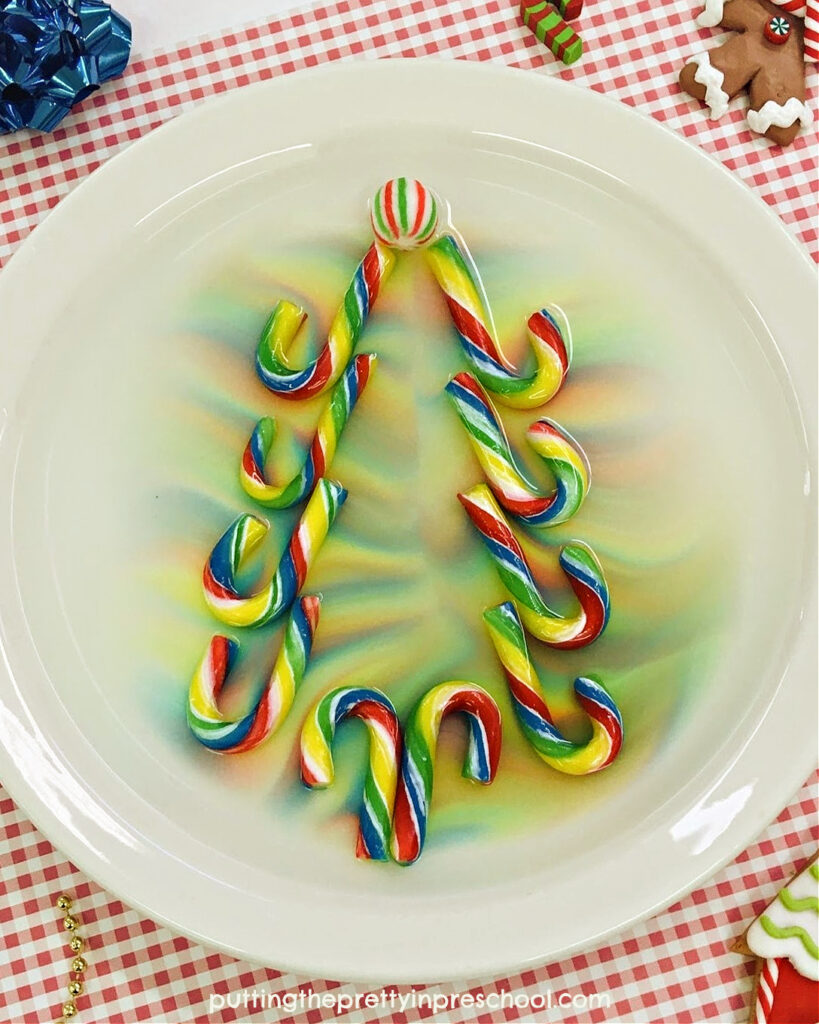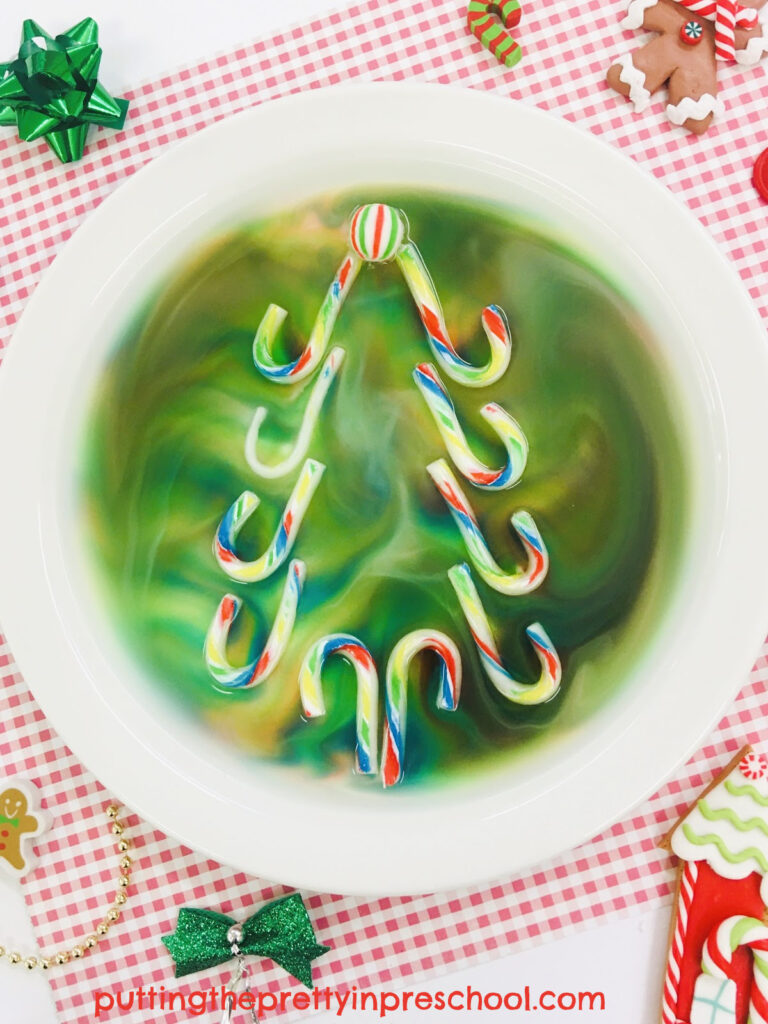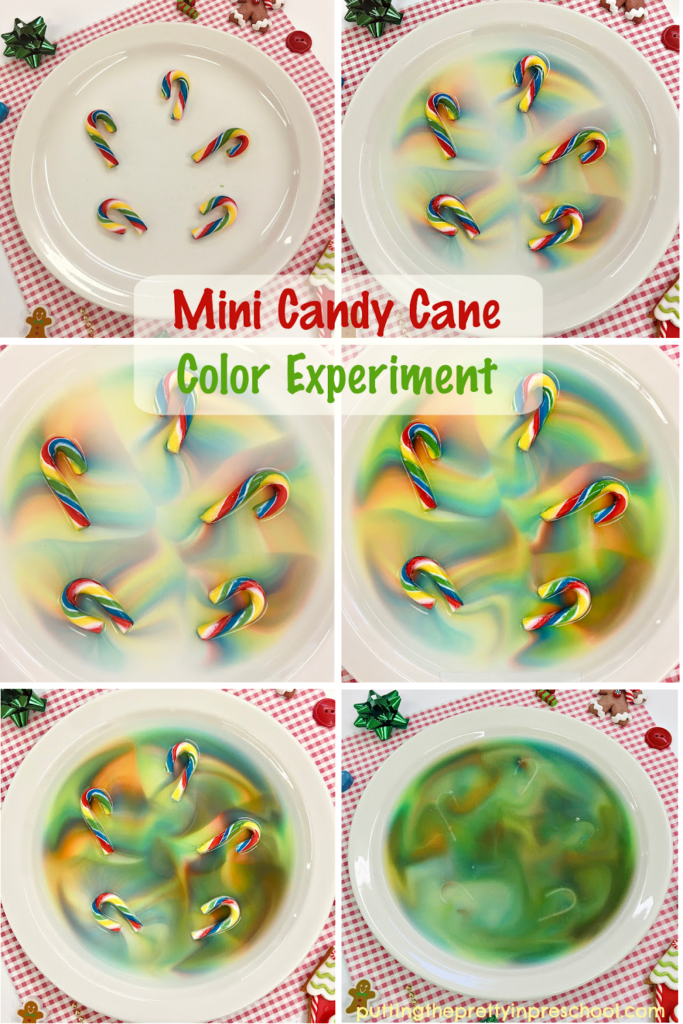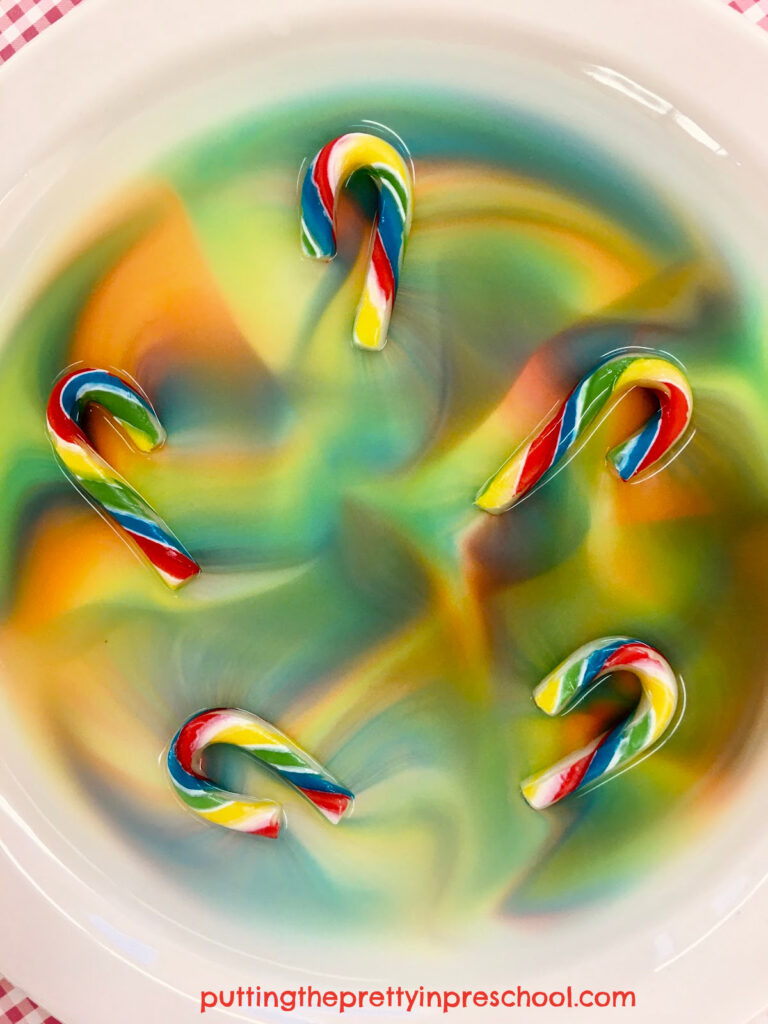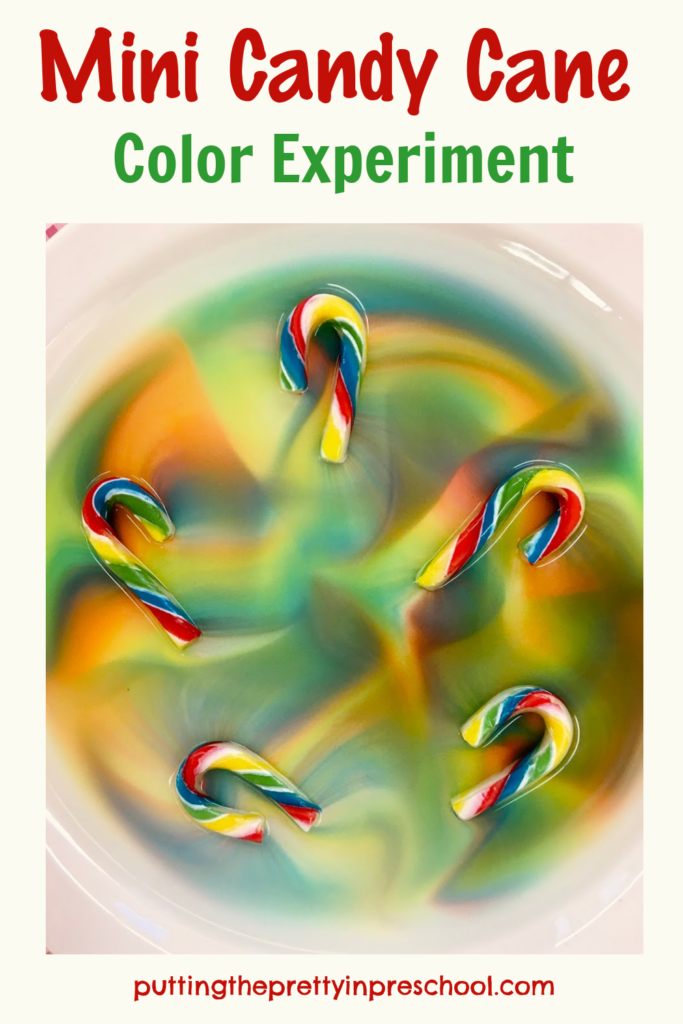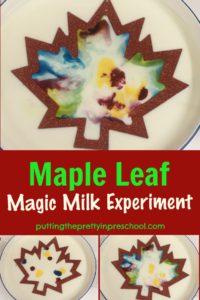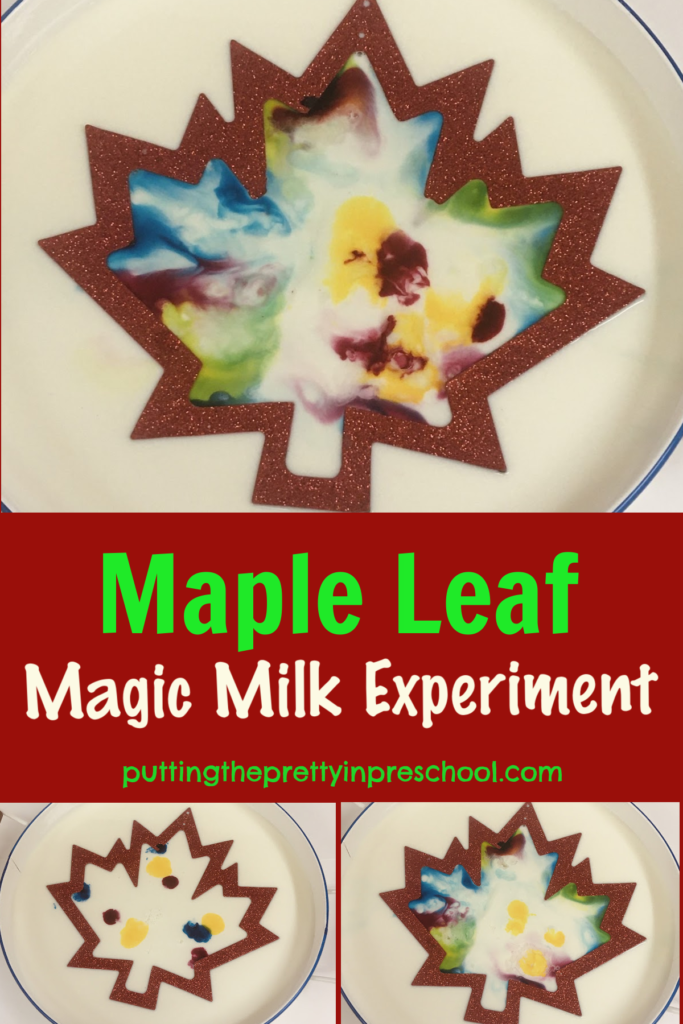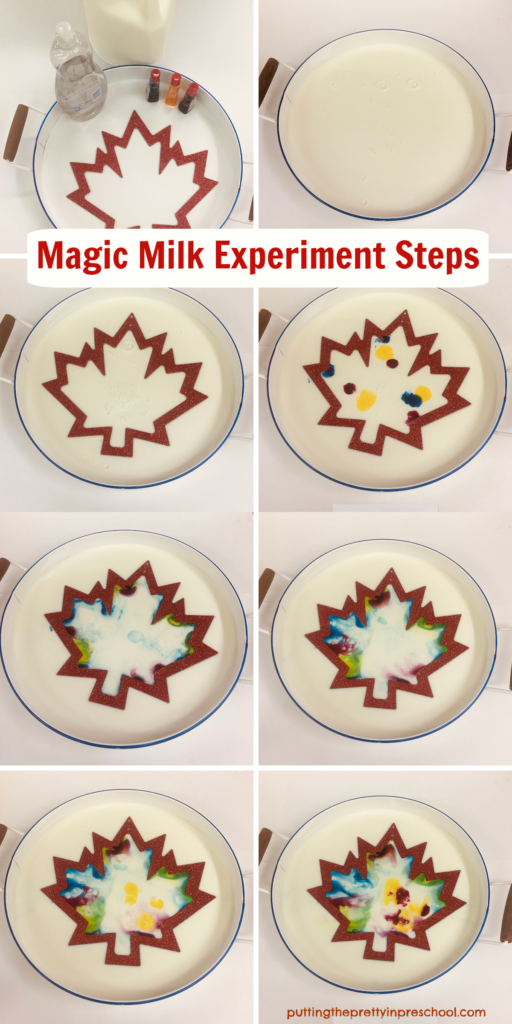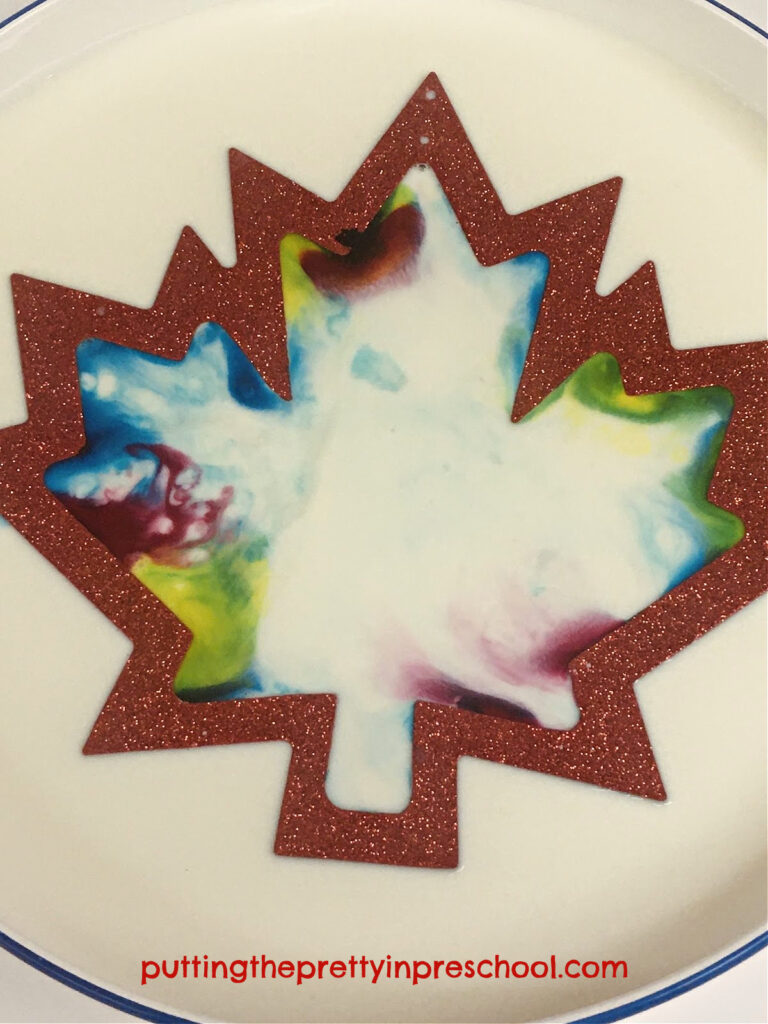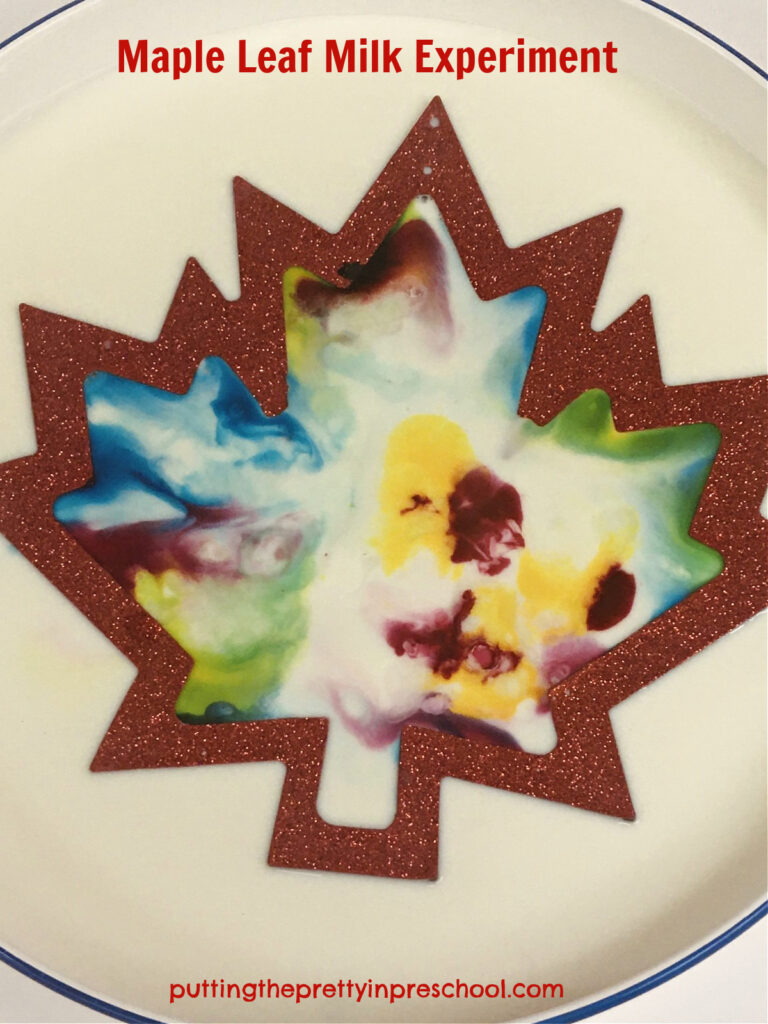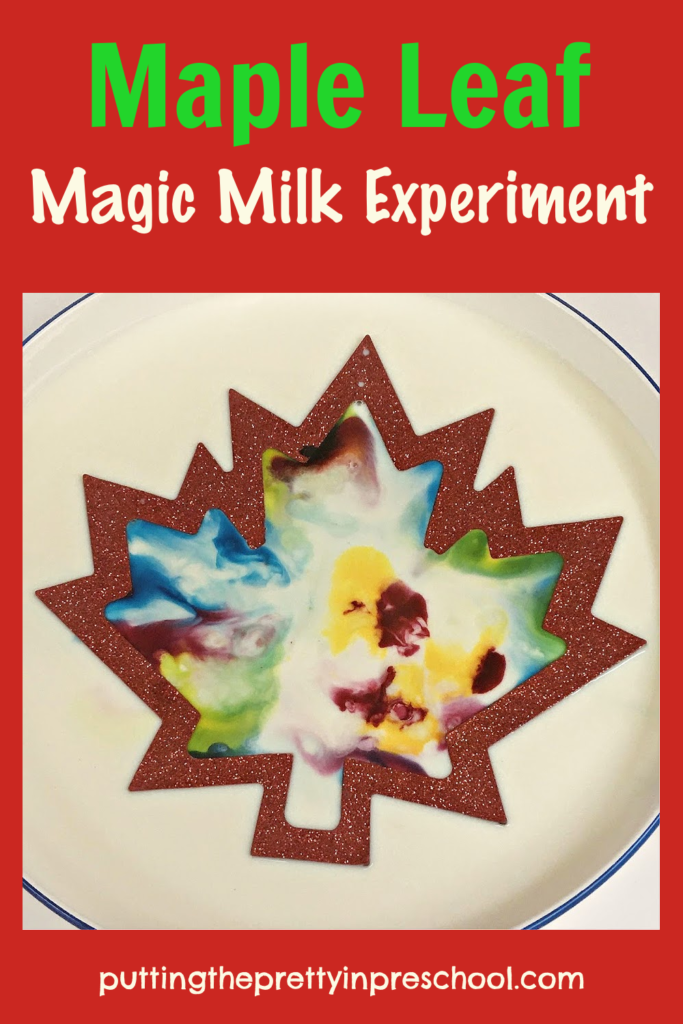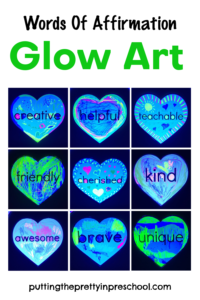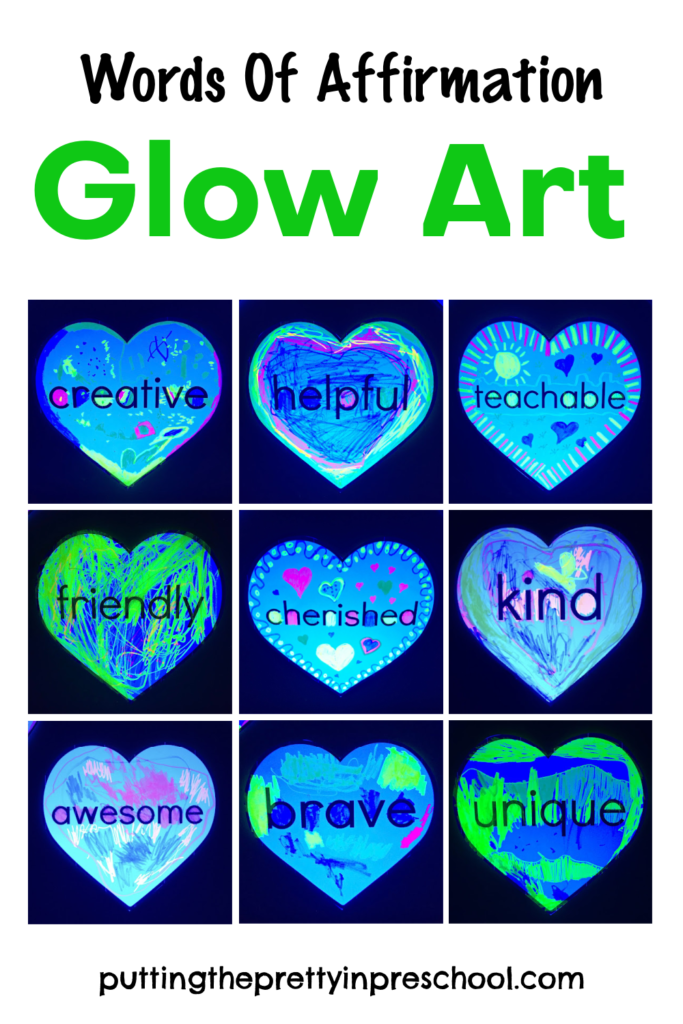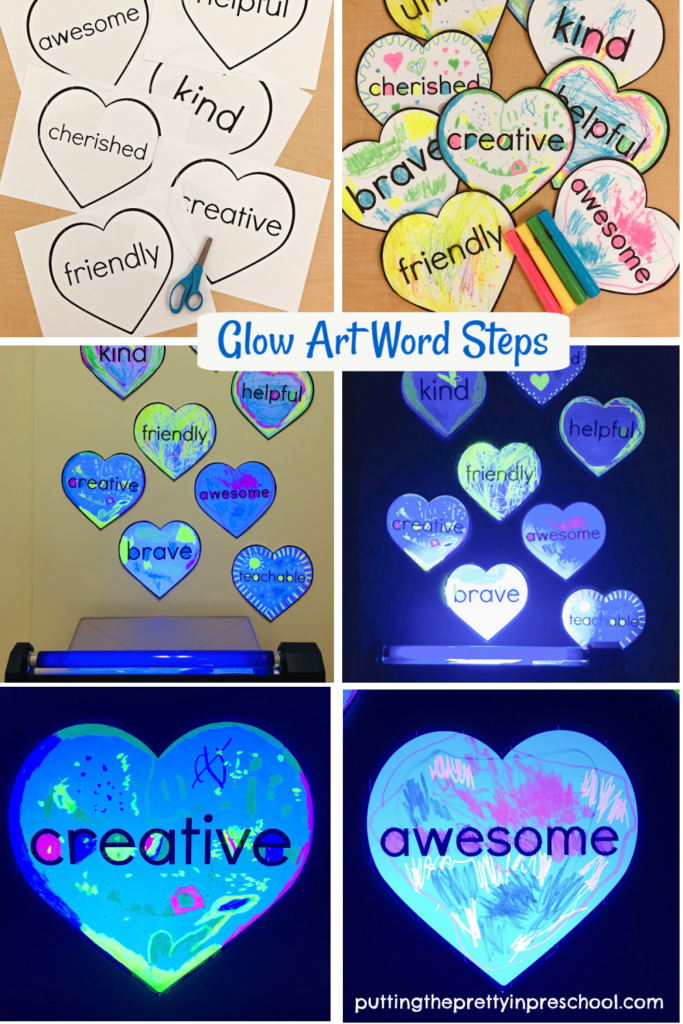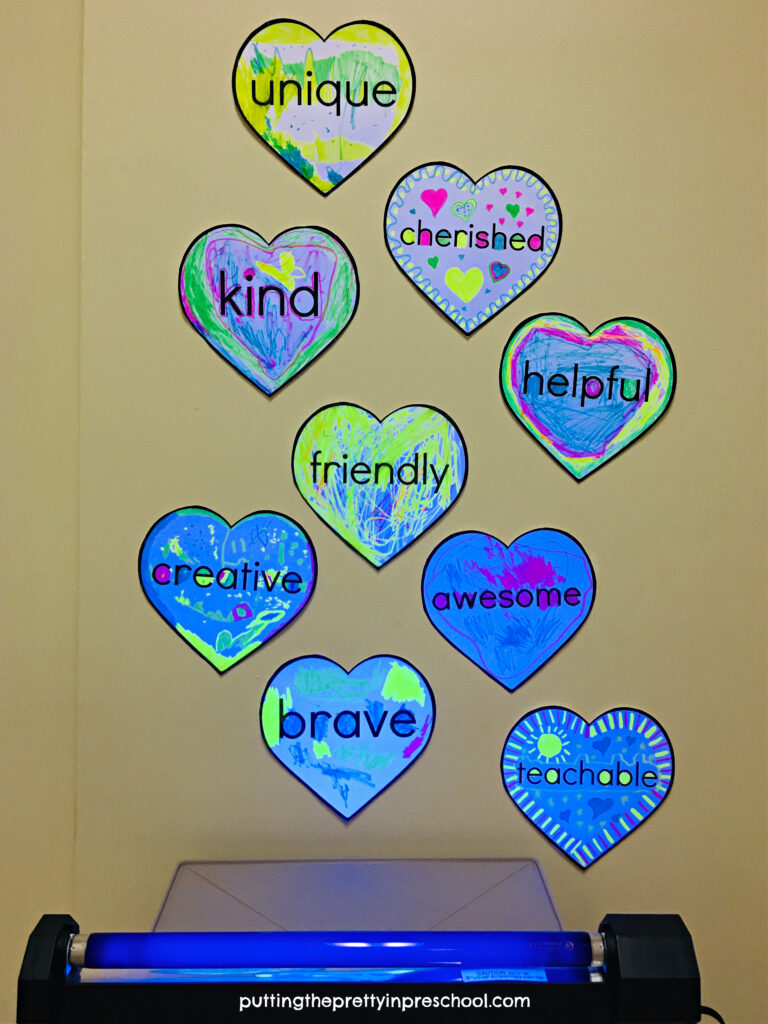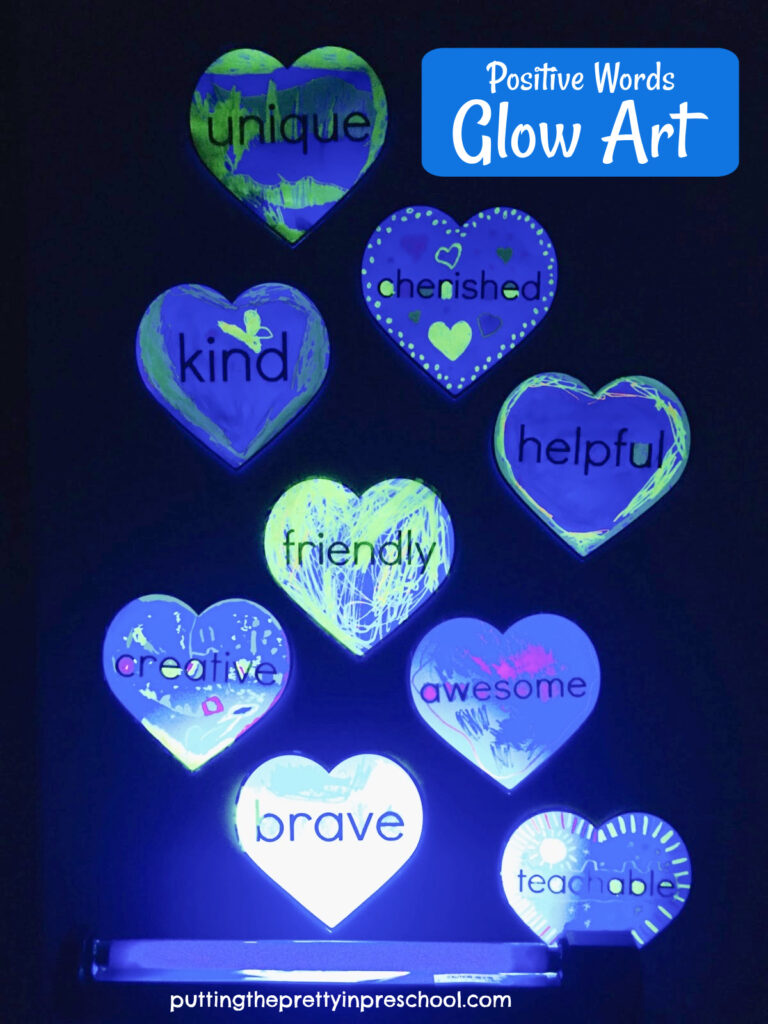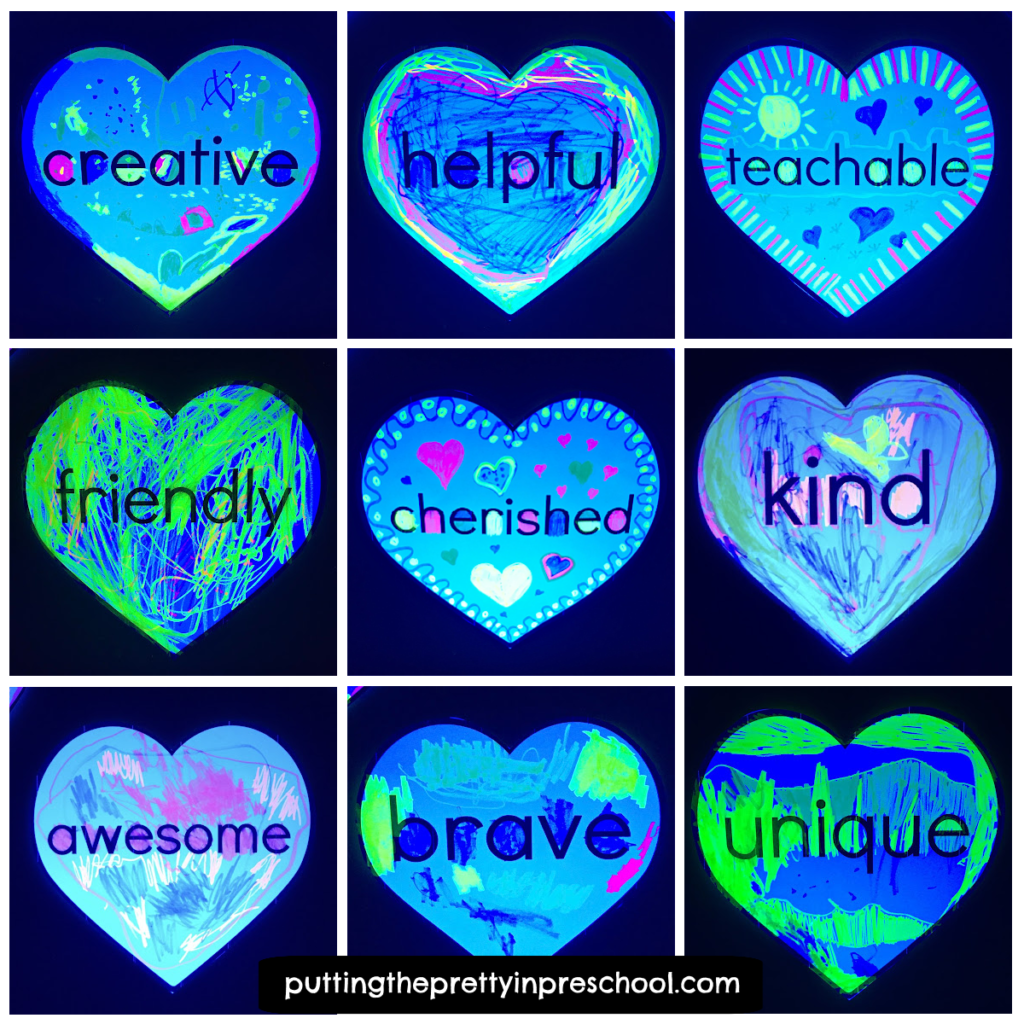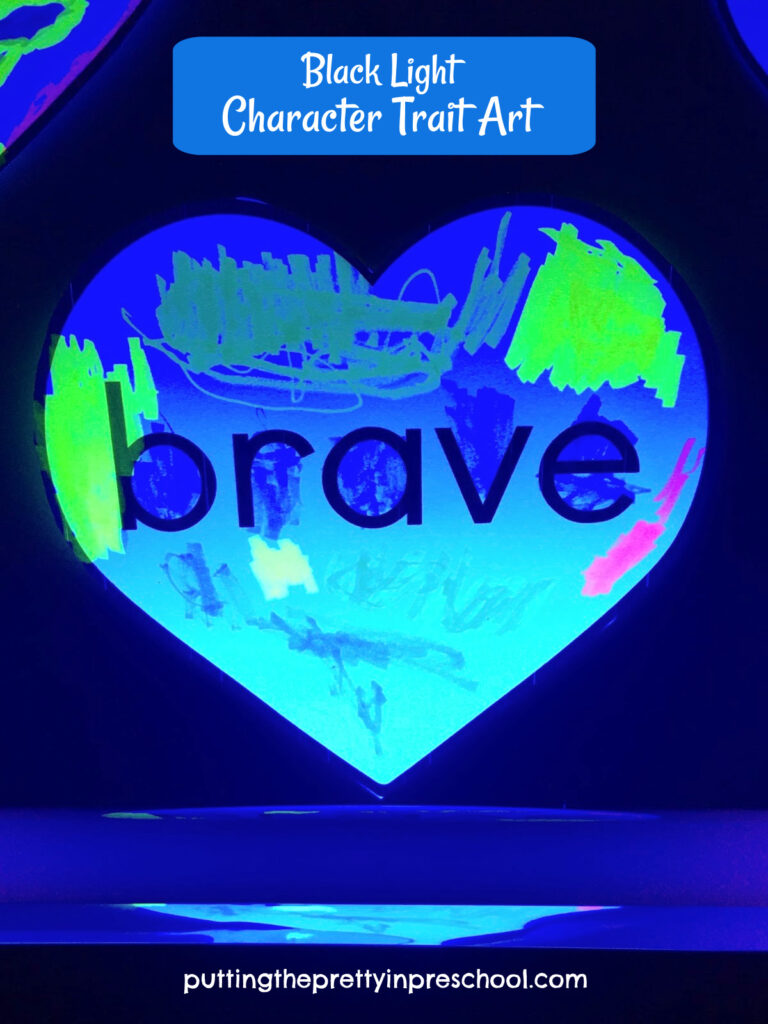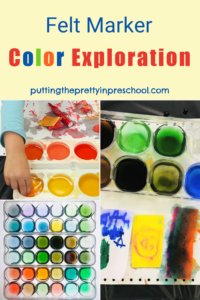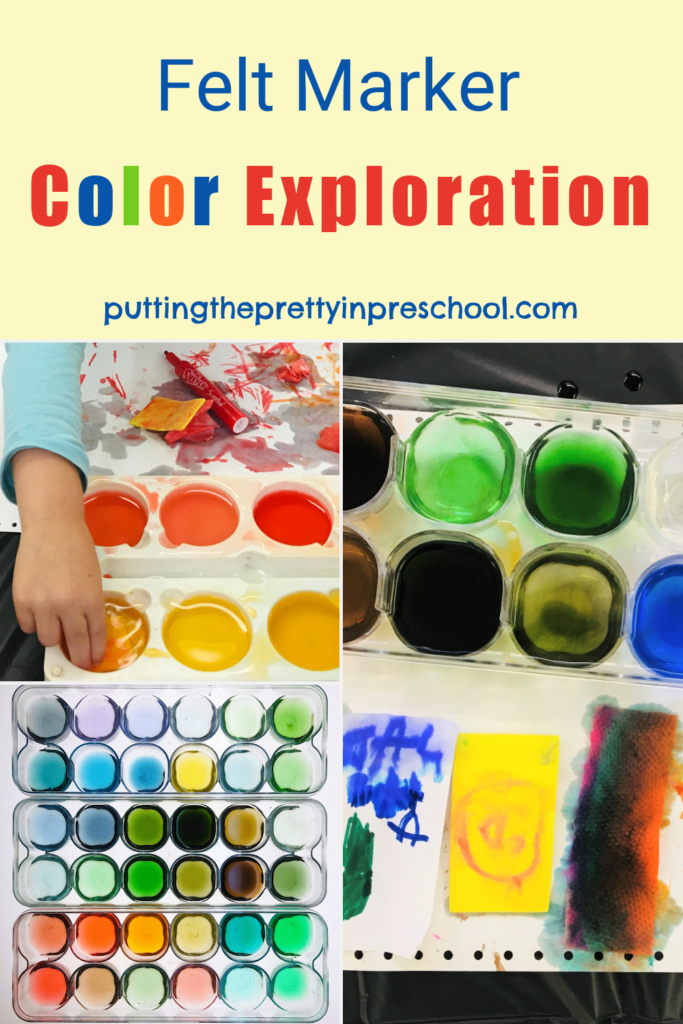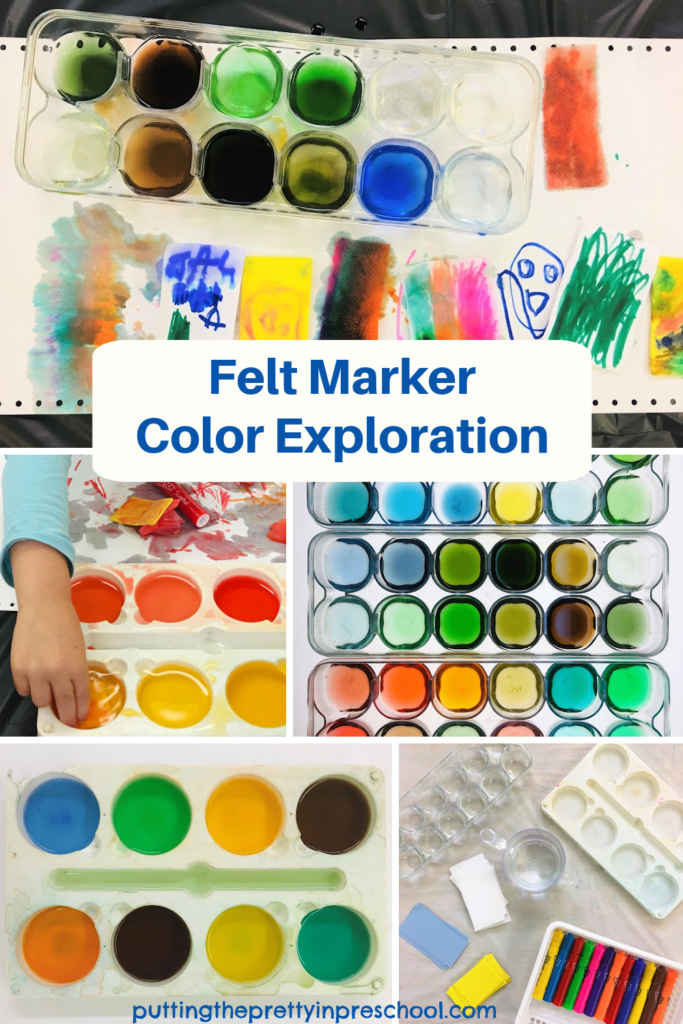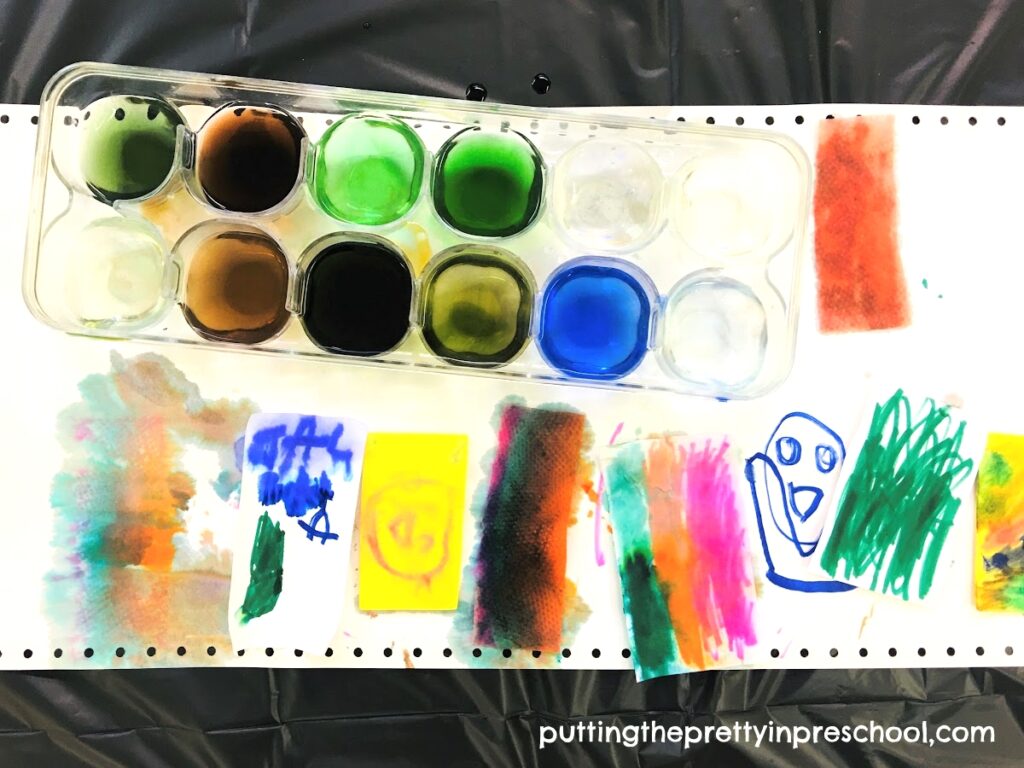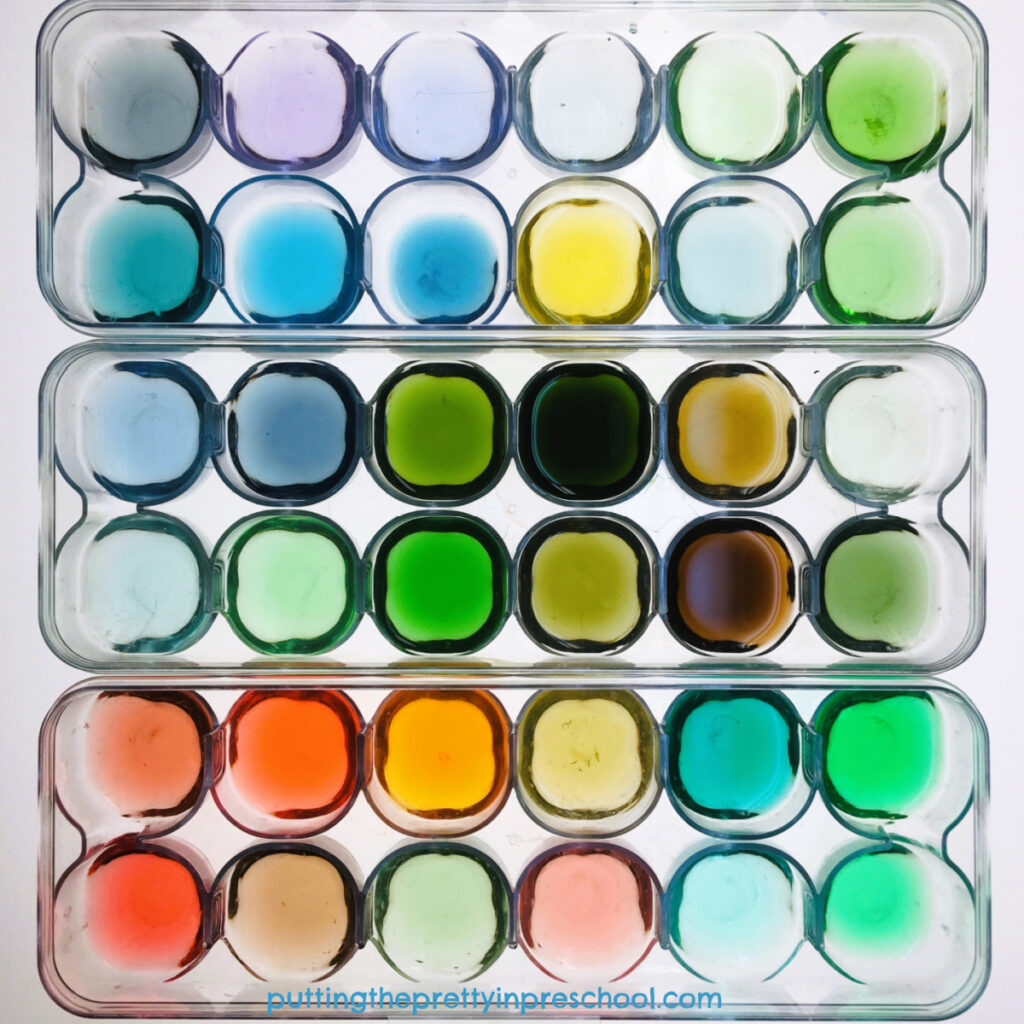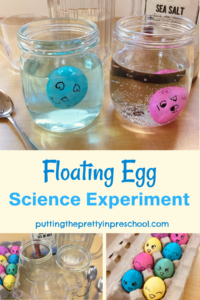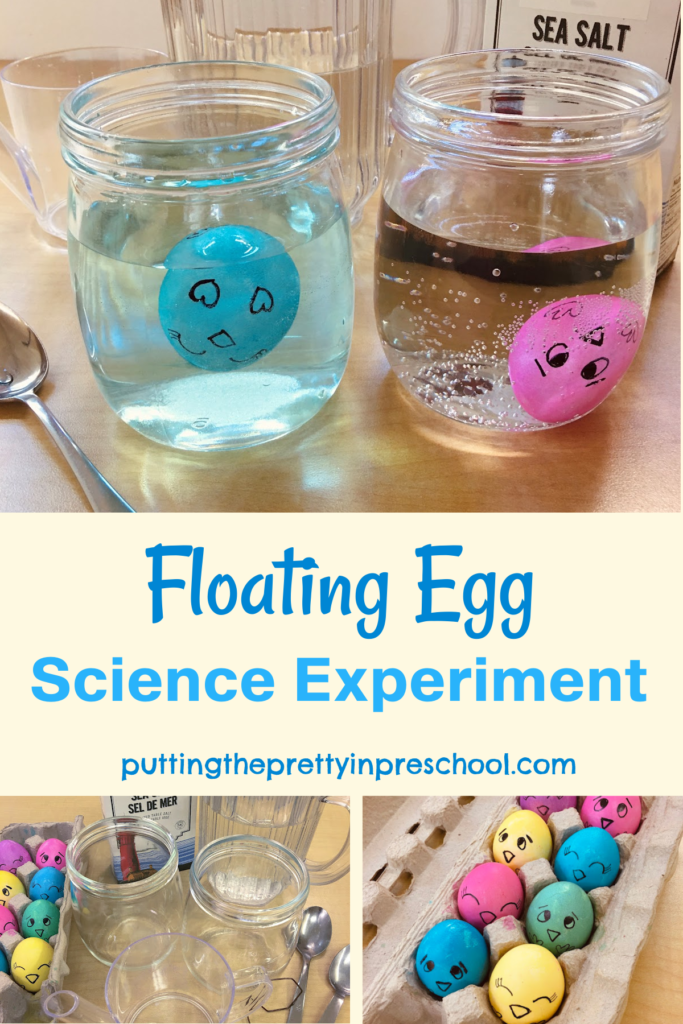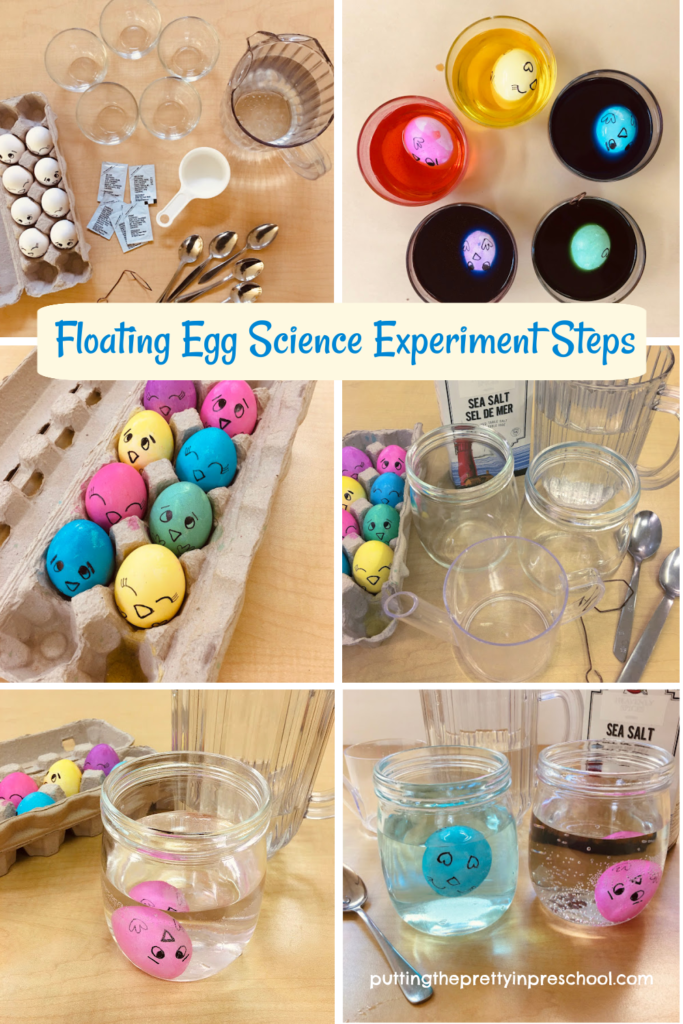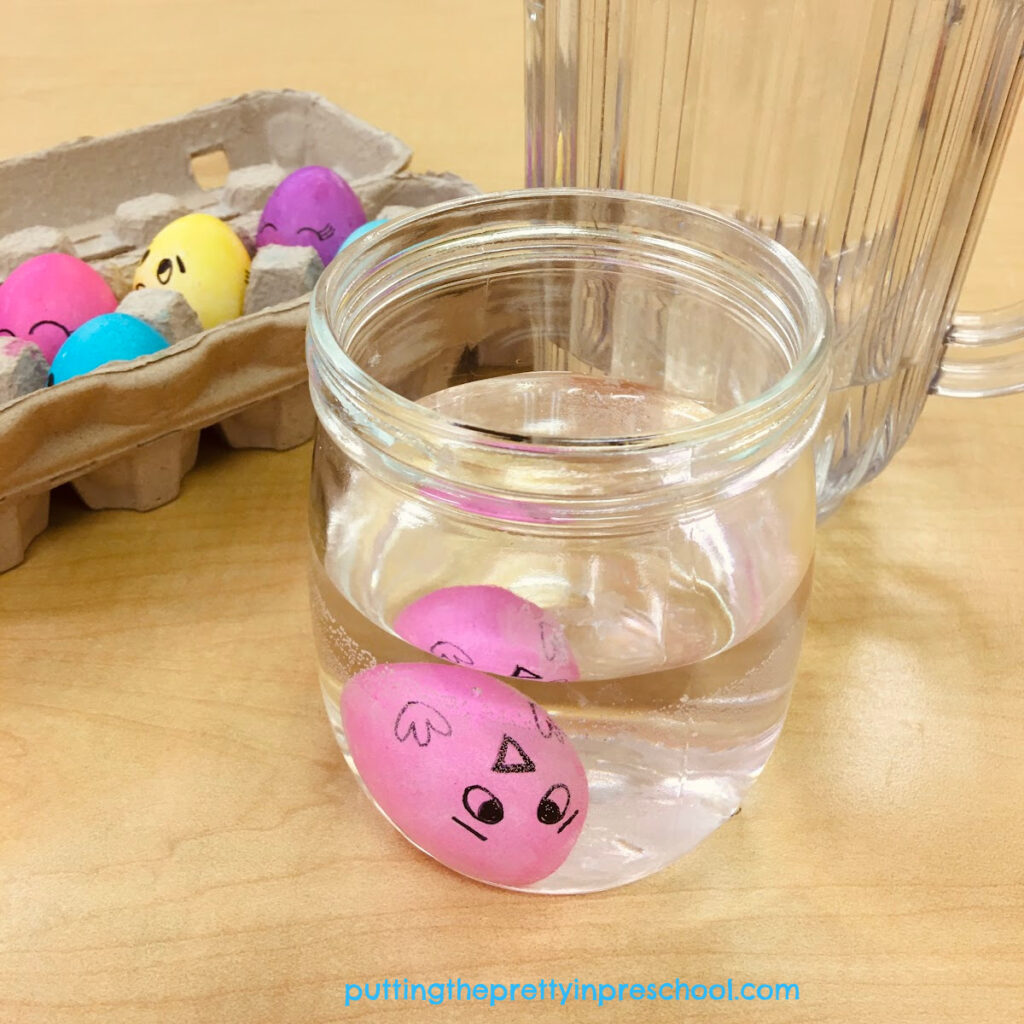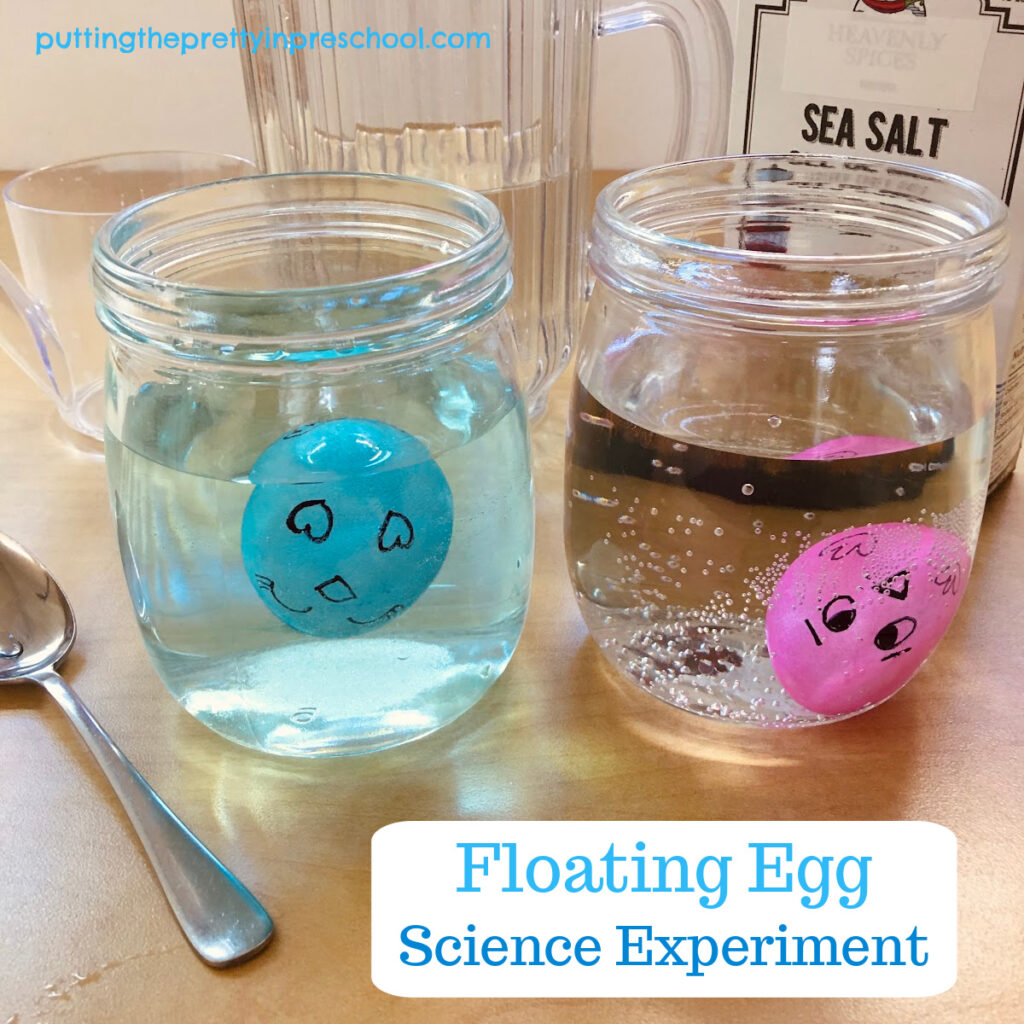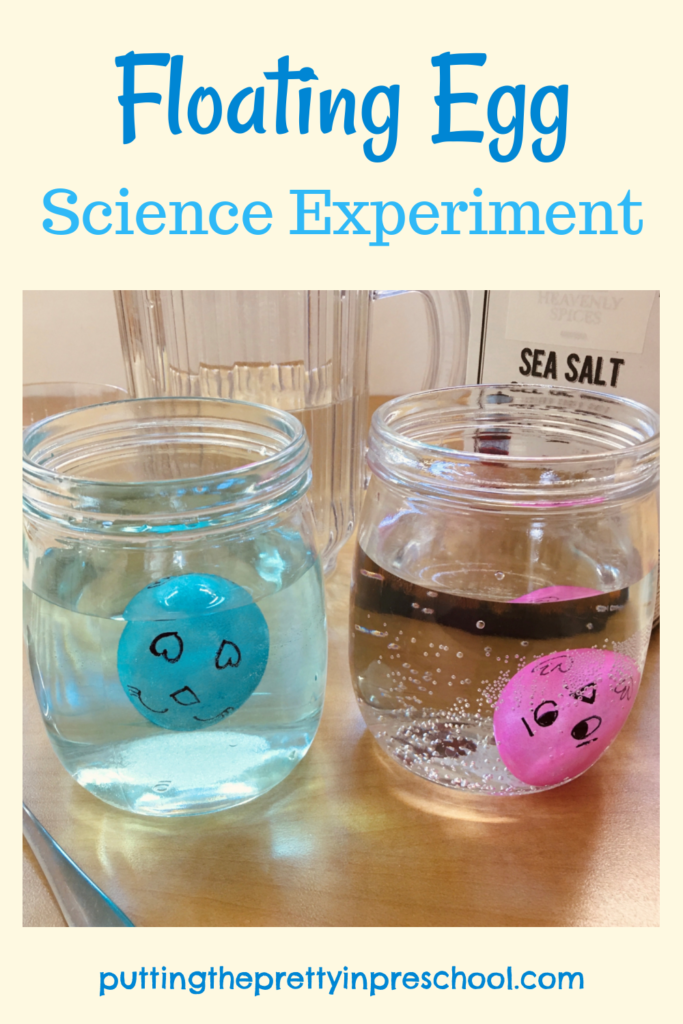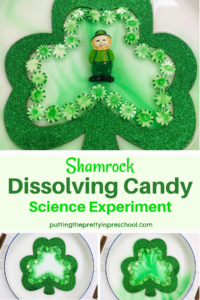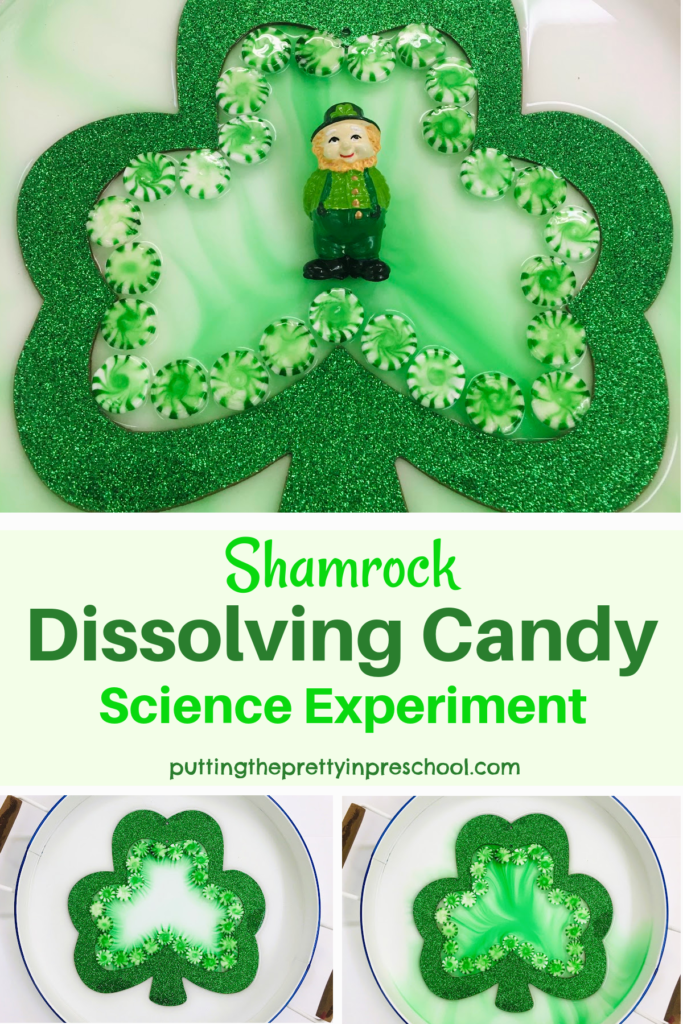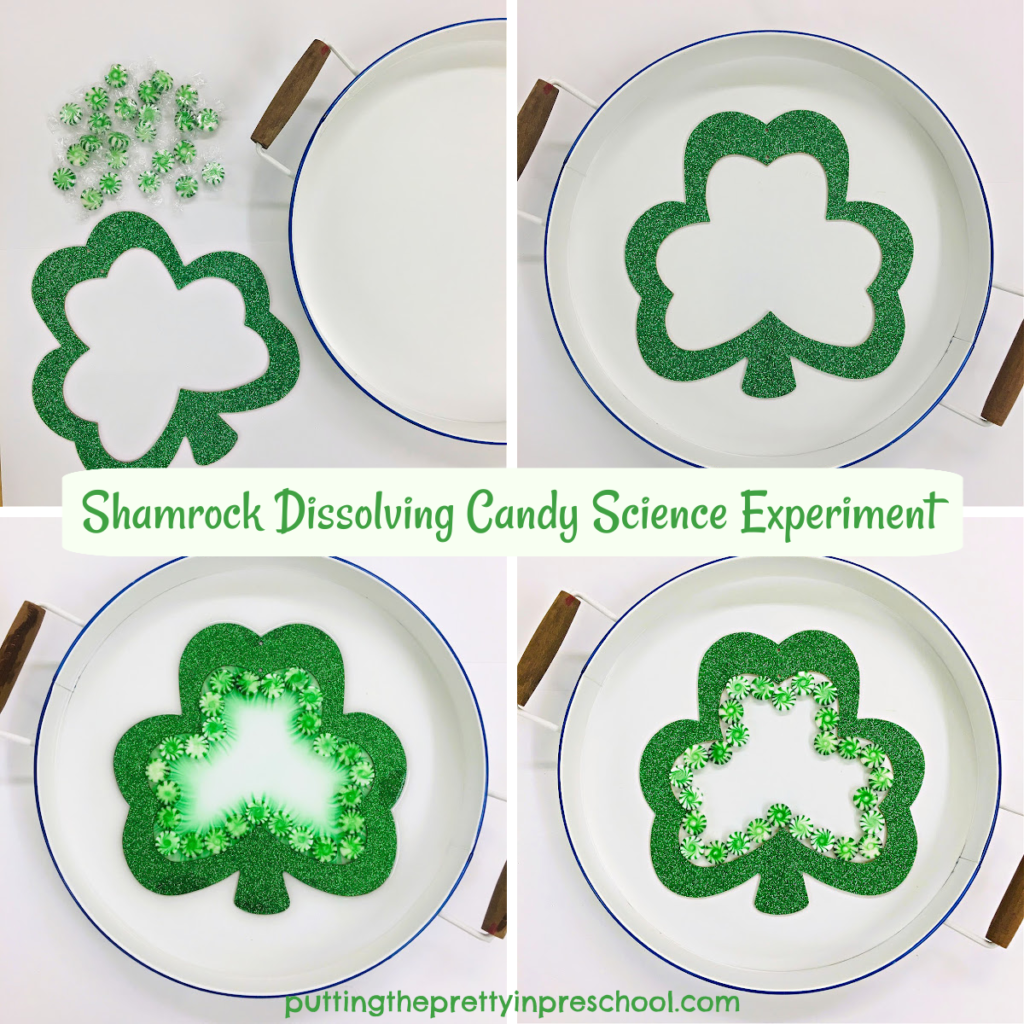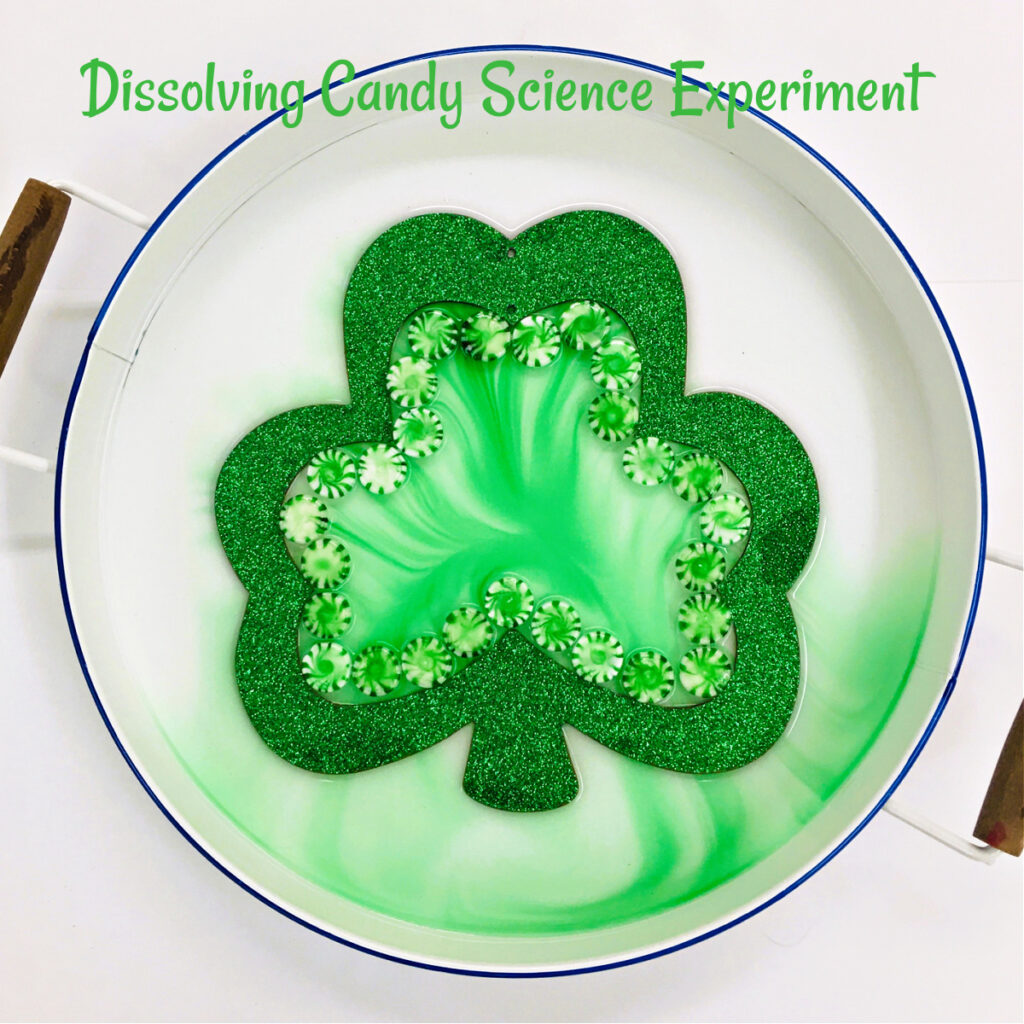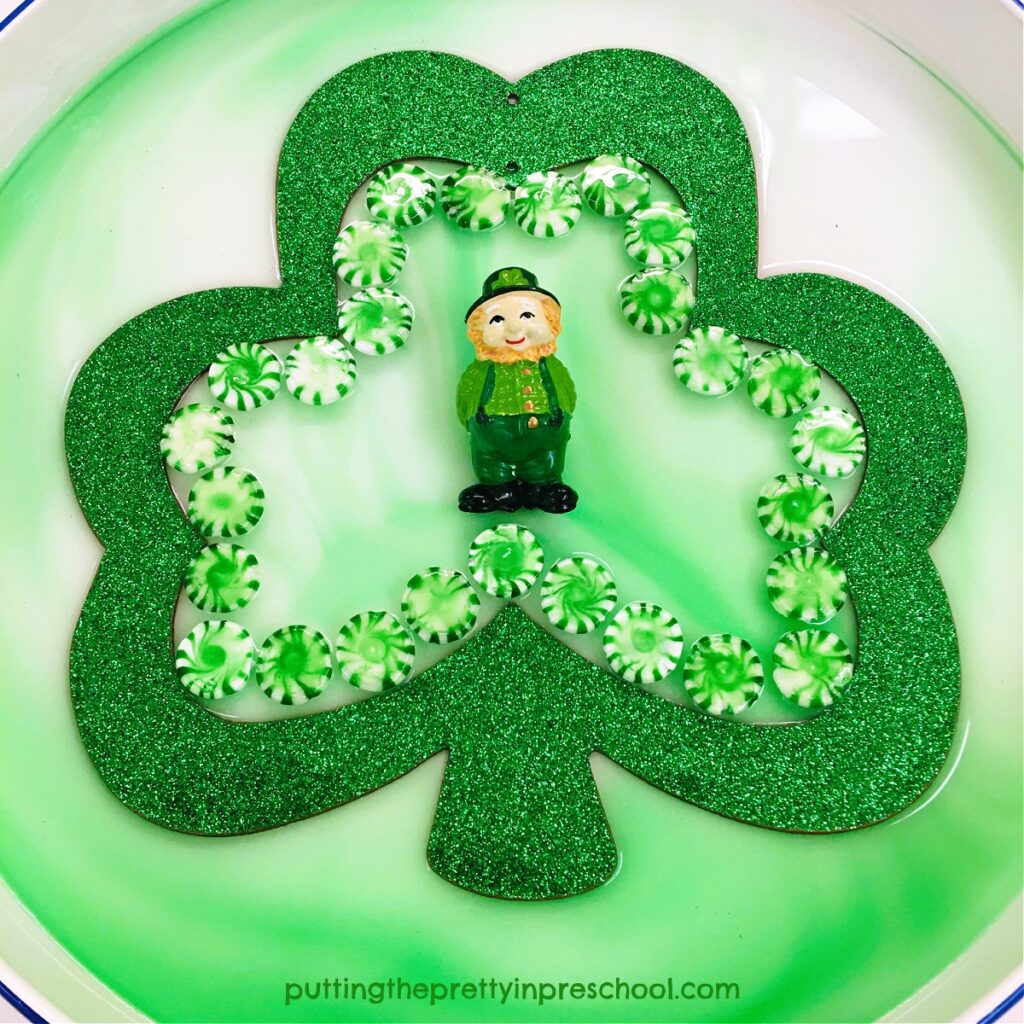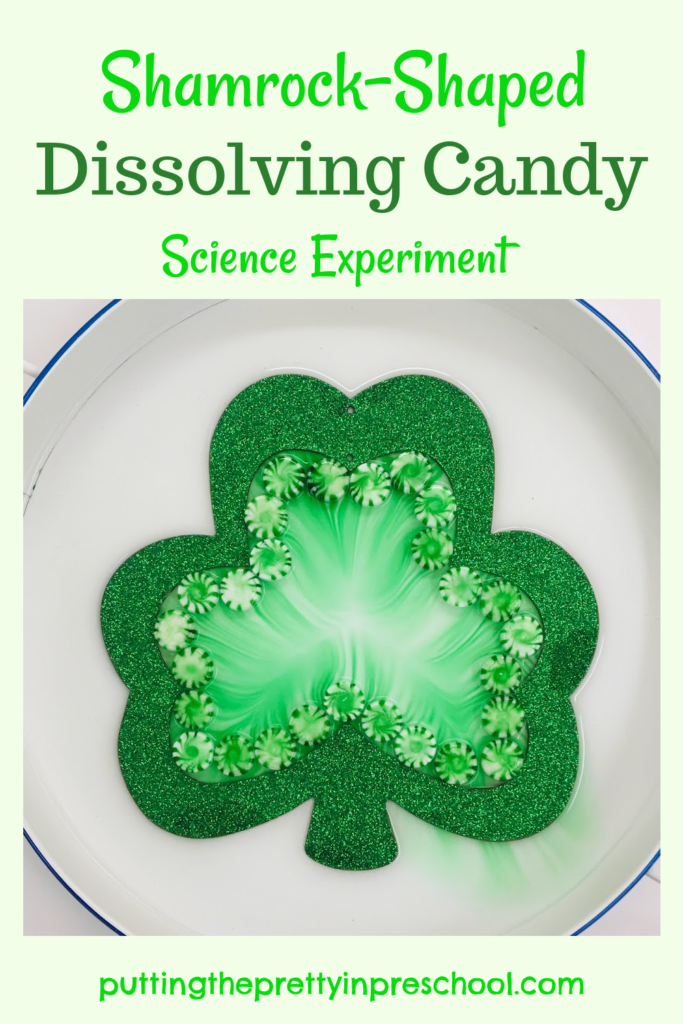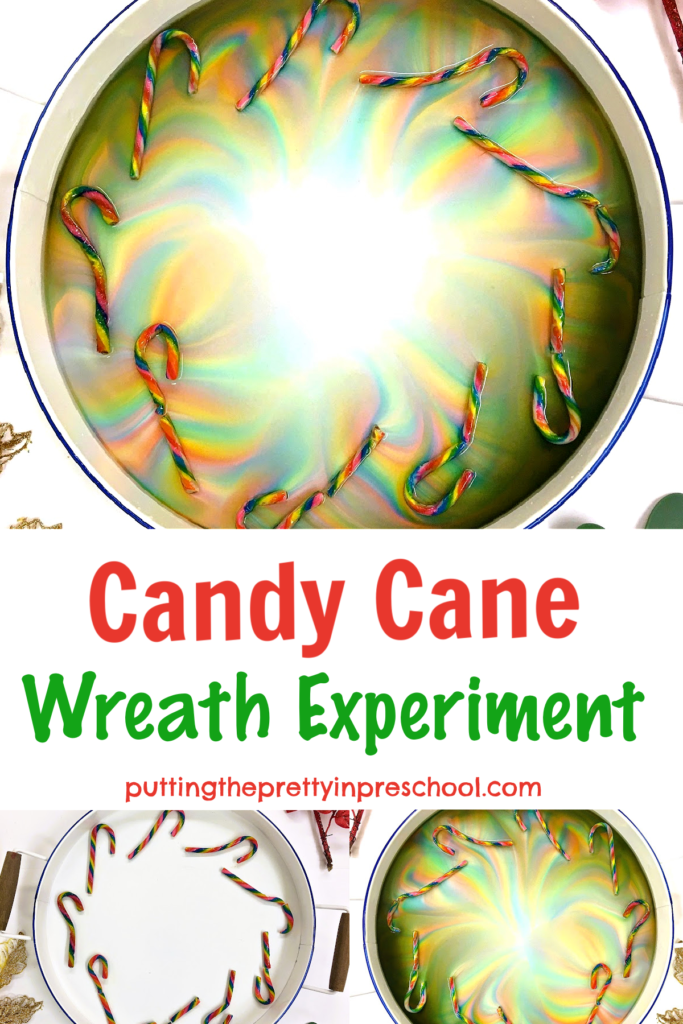
_______
It’s tradition for me to do a candy cane science experiment every December, and each year I arrange the candy canes in a new way or change up the sizes and colors of the sweet treat. In this post, I debut my latest design, a candy cane wreath experiment.
_______
Follow me on Pinterest for more early learning ideas.
_______
Supplies to Collect
Gathering supplies for this simple science experiment couldn’t be any easier. Just select an edged waterproof tray, and purchase a package of candy canes. You may have some on hand already. Then fill a pitcher or large glass with water and you are good to go.
_______
The Candy Cane Wreath Experiment
To perform this inexpensive color science experiment, arrange candy canes around the edge of a waterproof tray in a wreath-like shape.
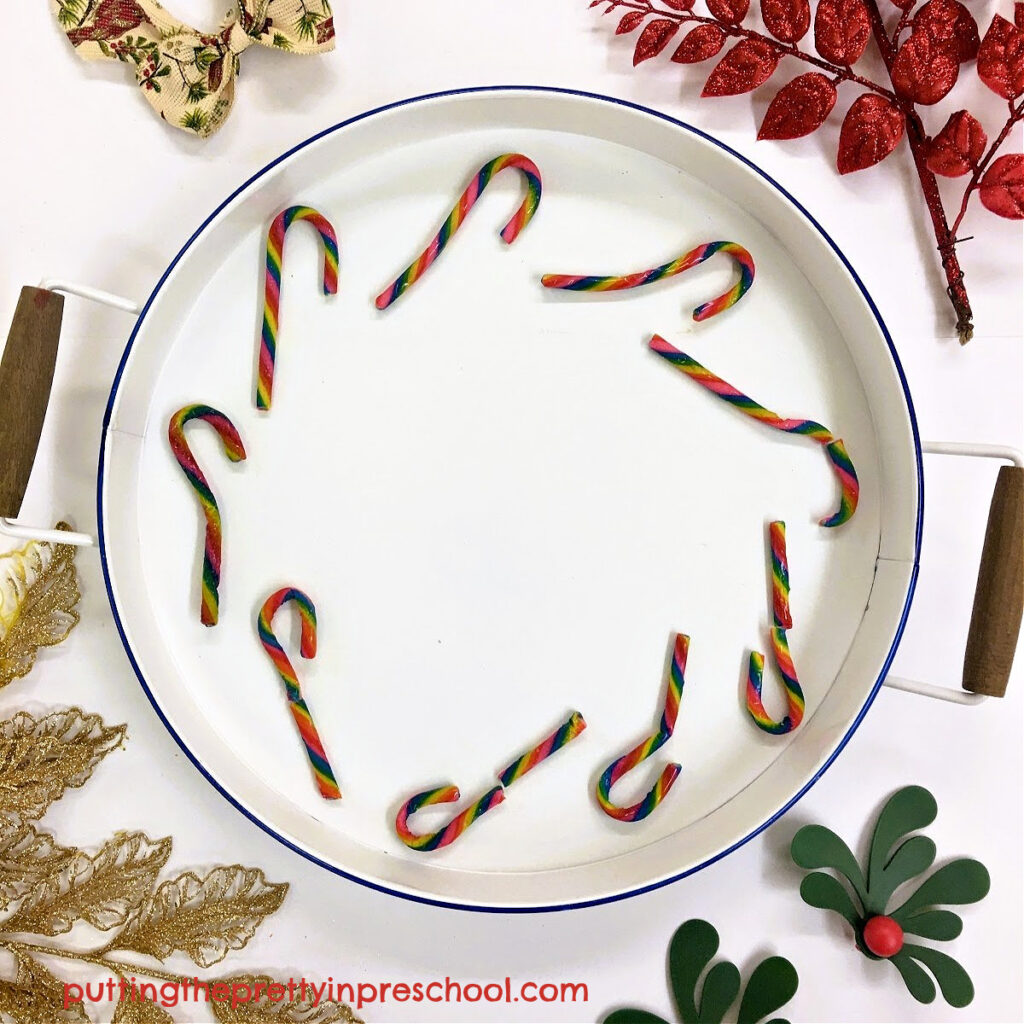
_______
If you look closely, you’ll notice one or two broken candy canes in the tray and a few oddly shaped ones. This science experiment is the perfect use for them, as I wouldn’t have wanted to hand those out as treats.
Next, slowly pour water into the tray until the candy canes are just covered in liquid.
Then watch what happens. You’ll see the candy cane colors slowly spread through the water.
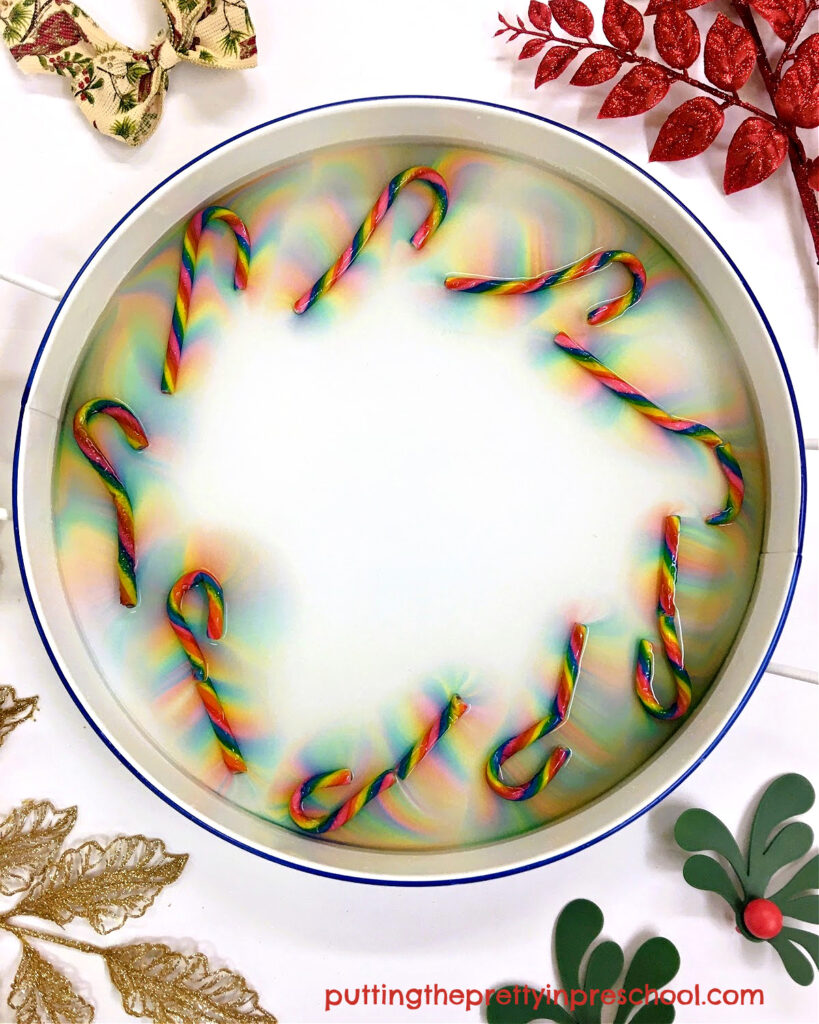
_______
Note: The color changes happen quickly. Stay by the science experiment and have your camera ready to snap a few pictures.

_______
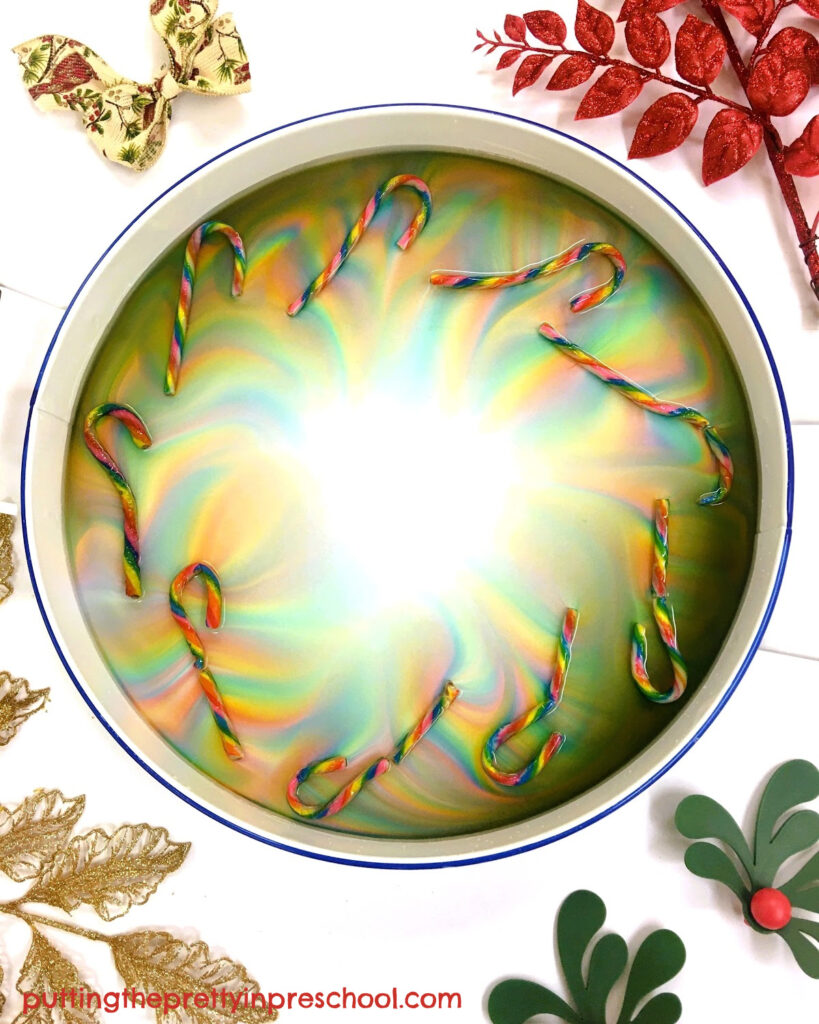
_______
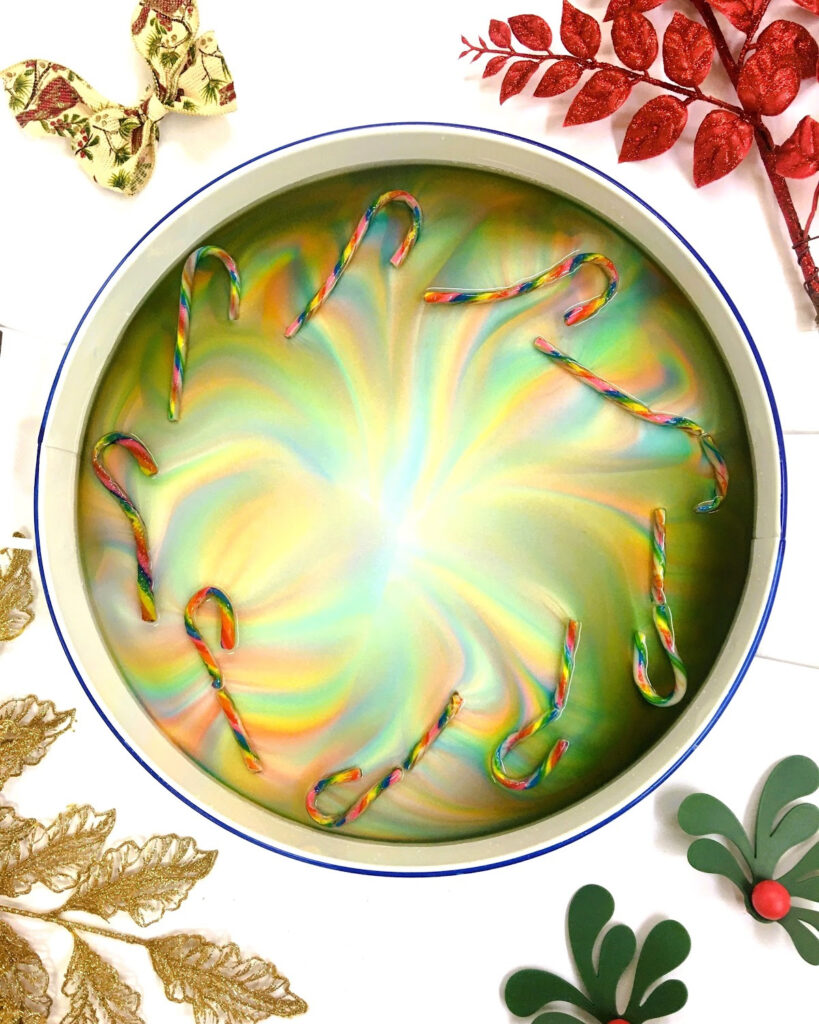
_______
After a little while, you can carry on with other activities and periodically check in on the experiment to see even more color changes and view the candy canes melting away.
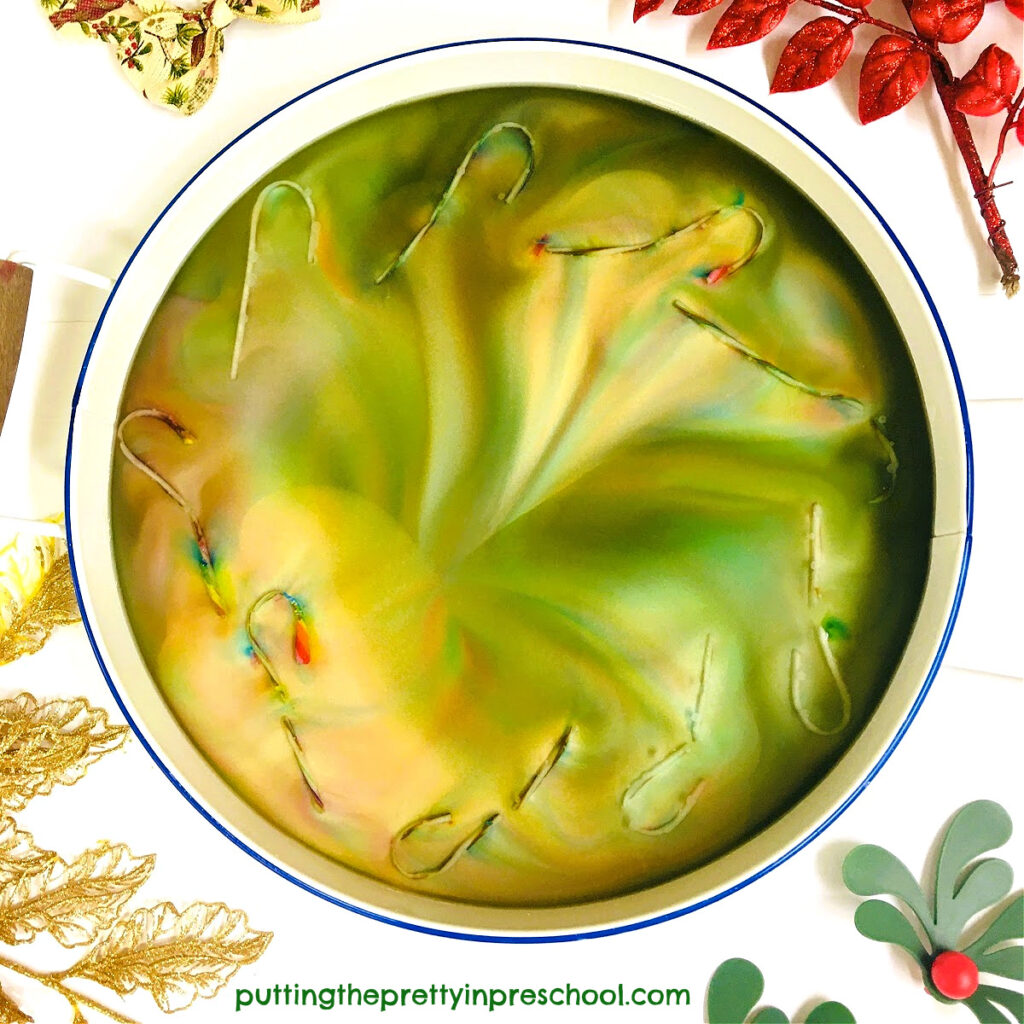
_______
The Science Behind This Candy Cane Color Experiment
Candy canes are made of sugar. The water breaks the sugar molecules apart. Then the food colors move through the water away from areas of higher sugar concentration (near the candy) to areas with less sugar. When the sugar concentration is the same in all areas, the colors stop moving.
_______
More Candy Cane Activities
Mini Candy Cane Tree Experiment
Christmas Peppermint Sensory Bin
Blue Candy Cane Science Experiment
_______
[Read more…] about Candy Cane Wreath Experiment